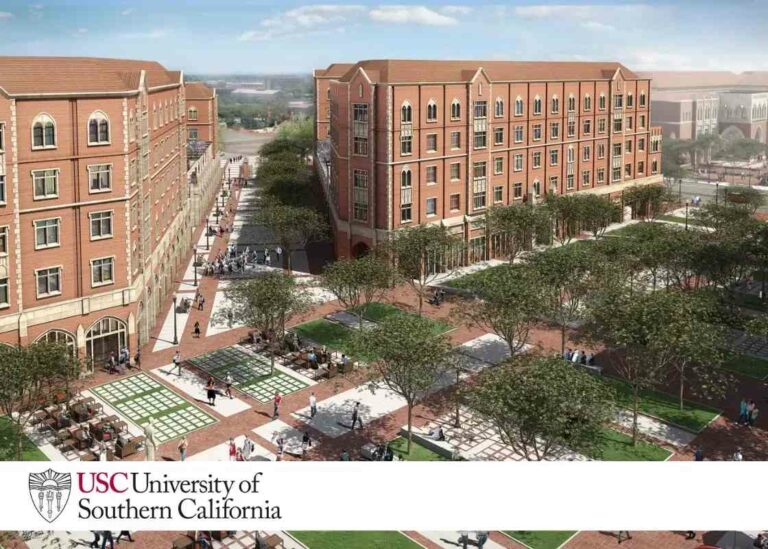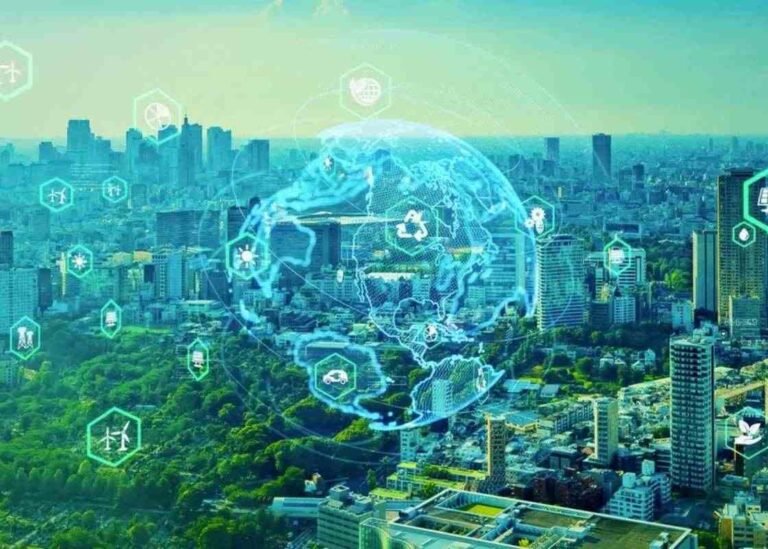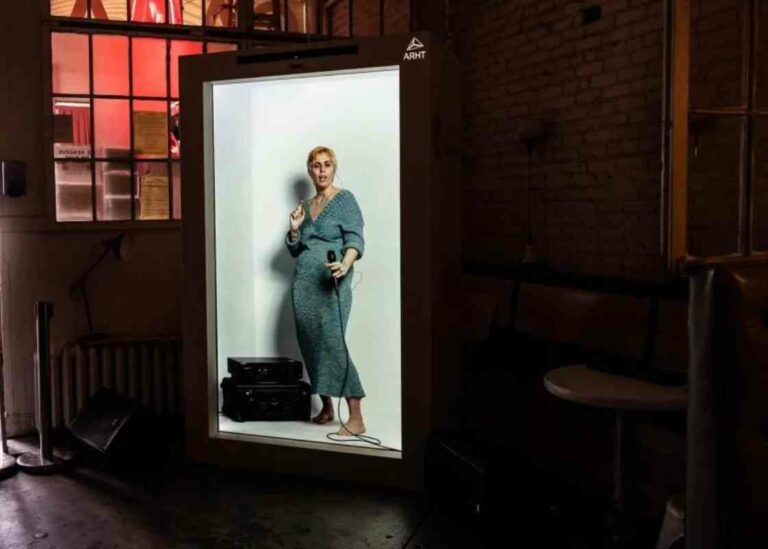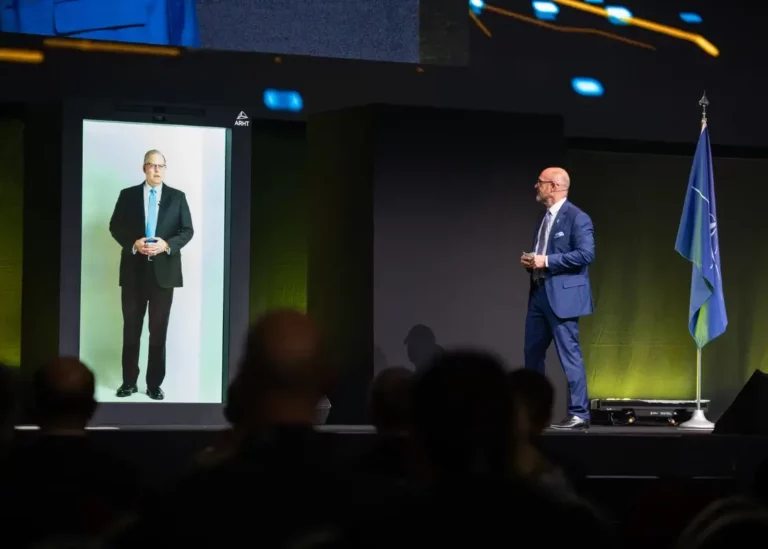While exhibits were organized by product and technology categories, self-service technology exhibits emerged throughout the show floors.
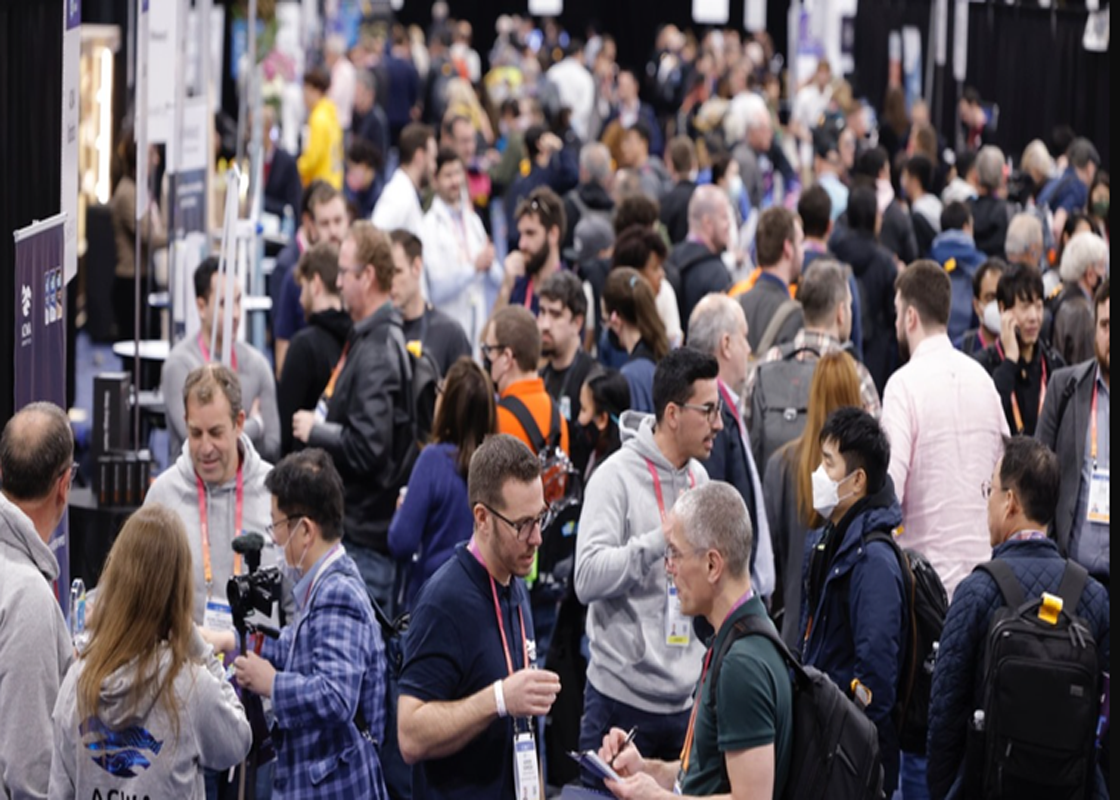
Innovation never rests. Last week's CES show in Las Vegas delivered a full dose of what the future has in store. Everything from talking and walking robots to EV charging stations and life size holograms and more.
This year's CES, formerly known as the Consumer Electronics Show, came close to its 2019 pre-COVID attendance with exhibits crammed with attendees at the Las Vegas Convention Center and the Venetian Expo.
While exhibits were organized by product and technology categories such as artificial intelligence, 3D printing, cryptocurrency, cyber security, digital health, etc., self-service technology exhibits were plentiful throughout all sections of the show floors.
For example, Chowis Co. Ltd., a maker of an artificial intelligence powered skin diagnosis solution, presented a self-serve kiosk for clinics and retailers.
And while much of the technology introduced has not yet emerged in a self-service application, much of it naturally lends itself to it.
Arht Media, for example, makes life size holographic displays designed for live meetings that will easily lend itself to recorded videos to promote retail offerings.
Many exhibits, meanwhile, already feature self service. Following are trade show highlights with a self-service application listed in alphabetical order.
Aeolus Robotics
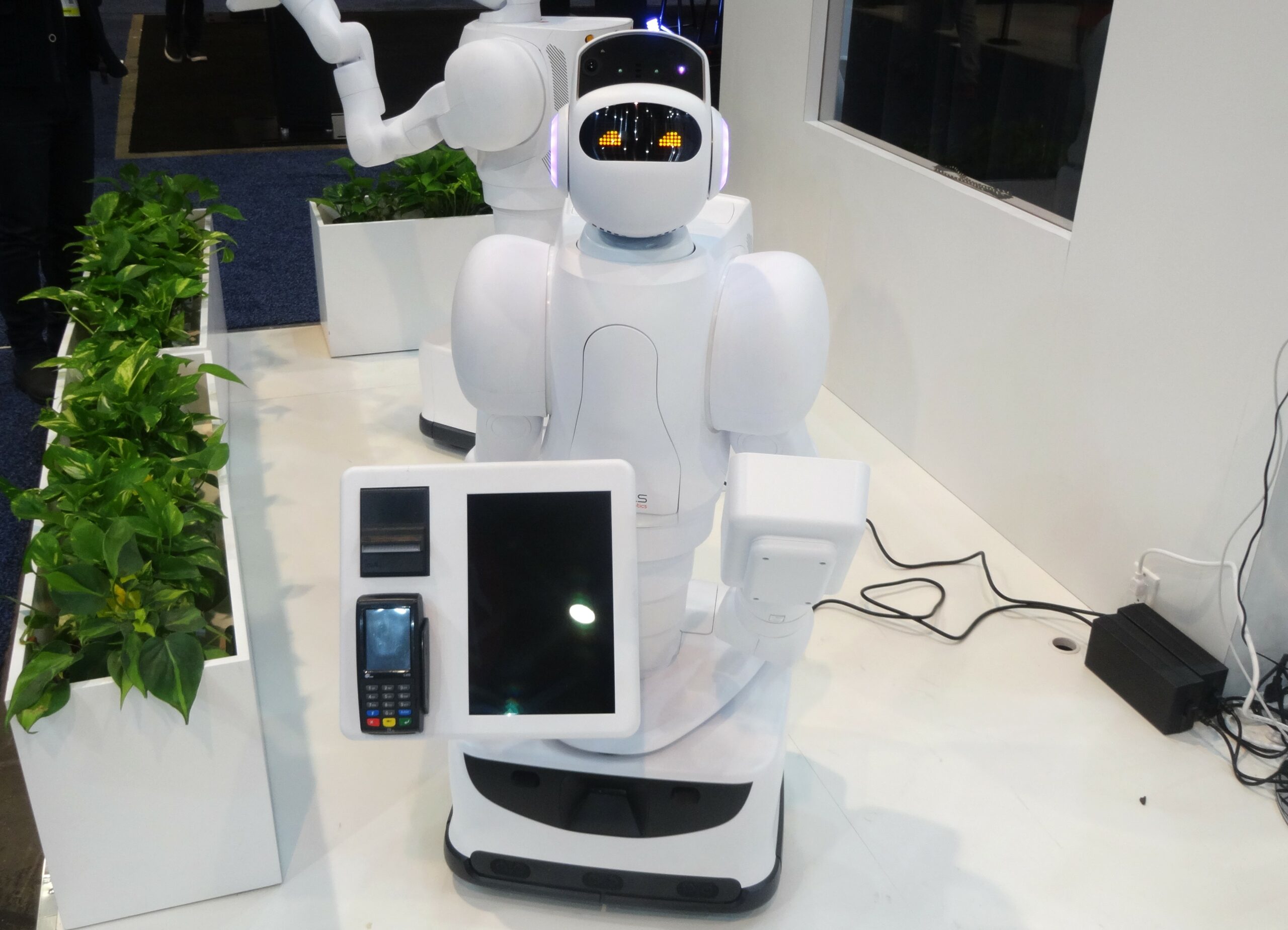
Aeolus Robotics, based in Taipei, Taiwan, introduced aeo, a dual-arm humanoid robot that performs service tasks including kiosk operation, security, delivery, elder care and ultra-violet germicidal disinfection. The robot combines functionality with mobility to open doors, pick up objects and ride elevators.
Available as a robot-as-a-service, aeo features plug-and-play attachments along with integration with third-party developers.
The dual arms have seven degrees of freedom to allow aeo to deliver or disinfect with one arm, while the other arm is free for tasks like operating elevators and opening doors.
The vision algorithms provide a range of capabilities, including determining the posture and position of residents for elder care safety to detecting misplaced backpacks for security.
Deployed in Japan, Hong Kong and Taipei, aeo offers services including night shift patrol for resident safety, medical supply delivery across hospitals, disinfecting facilities and patrolling offices and schools for intruders and misplaced items.
Blue Frog Robotics
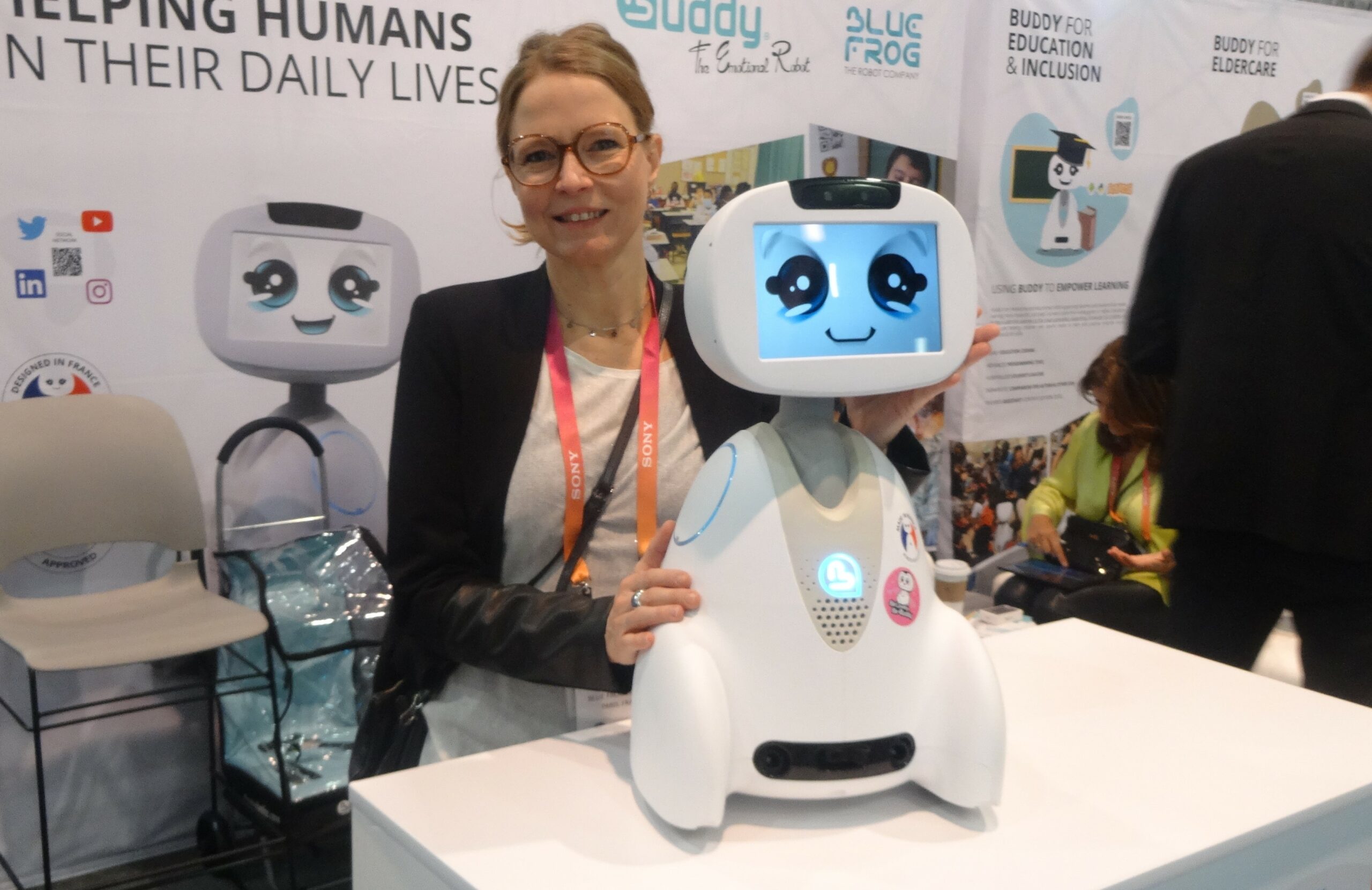
Blue Frog Robotics, based in Paris, France, presented Buddy, a robot with an interactive touchscreen interface designed to arouse human emotion that can assist, welcome, entertain, inform, educate and monitor.
Buddy leverages artificial intelligence, computer vision, natural language processing and gesture controls to take on multiple functions, including animating events and guiding customers.
The robot can be controlled remotely via a tablet.
Features include an LED and accessories hub, a heart LED, a speaker, ultrasonic distance sensors, infrared distance sensors, a camera and a lighting LED.
Boxx
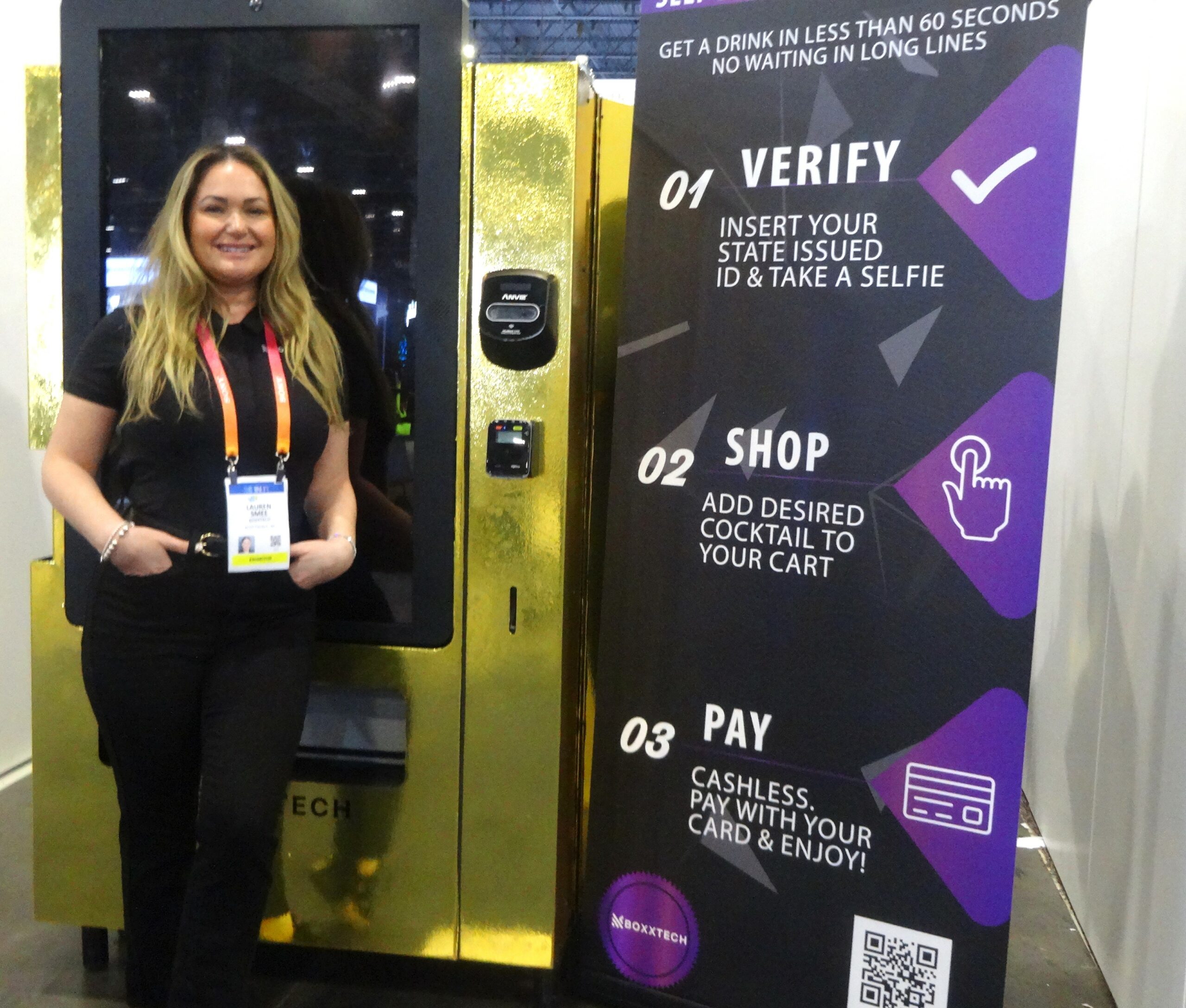
Boxx, a Scottsdale, Arizona startup, presented its contactless alcohol vending machine that uses an AI platform to ensure the customer is 21 years of age through live validation with AI-based facial matching. The process takes less than 15 seconds, and once their age is validated, the customer can begin shopping the inventory.
A scanner allows repeat customers to make purchases by looking at the camera. The machine can hold 500 cans and 25 different SKUs, including wine and champagne bottles.
The machine can hold 500 cans and 25 different SKUs, including wine and champagne bottles.
Braindog
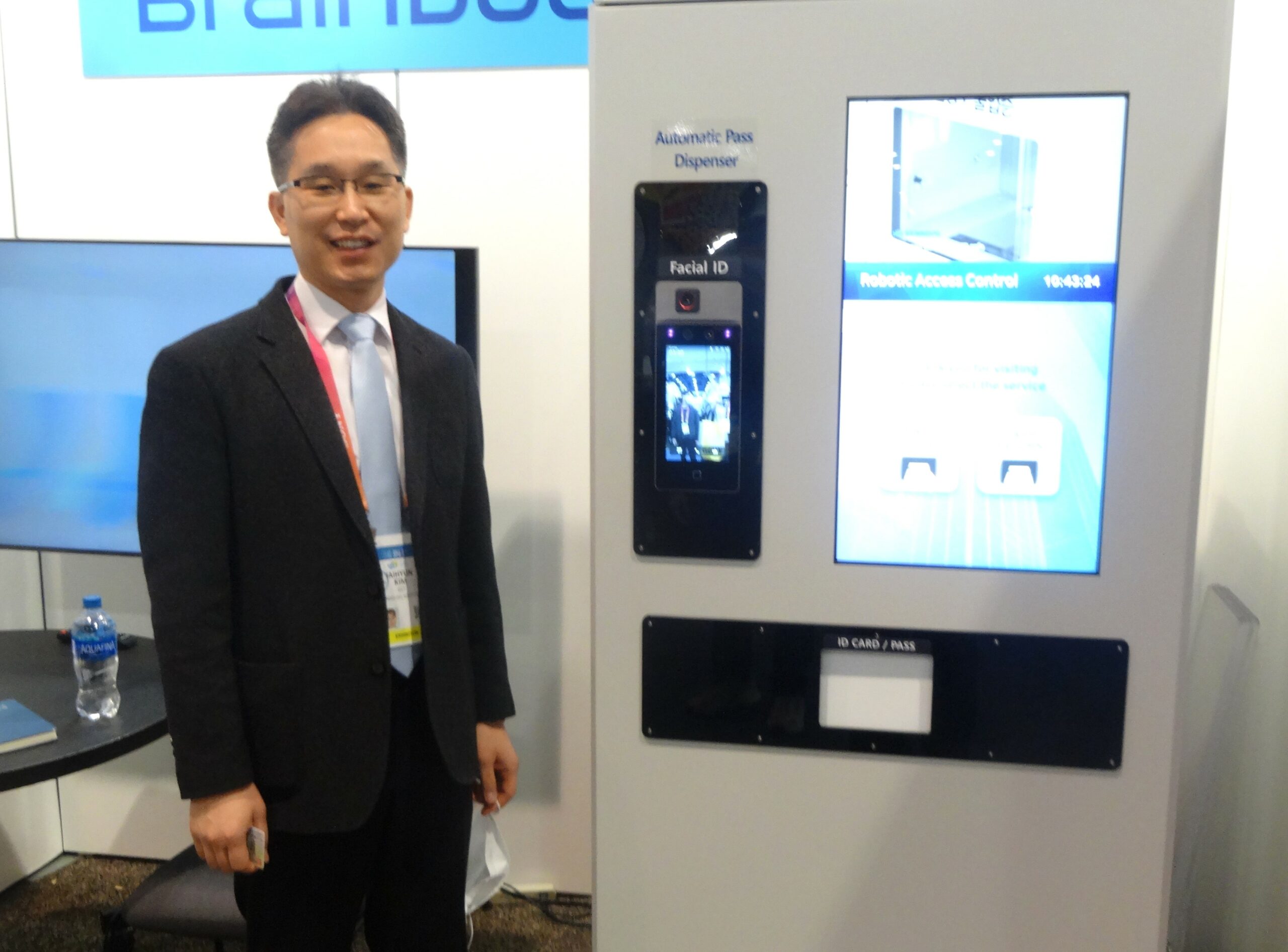
Braindog, a Seoul, South Korea-based manufacturer, presented its Passbot access control kiosk. The kiosk uses a facial recognition camera to scan the user's face and matches it with their ID photo.
The machine includes a pass dispenser for approved users.
There is also an interactive screen that allows the user to sign a consent form for repeat use.
The machine also includes sensors that can take temperatures.
CandyMachines.com
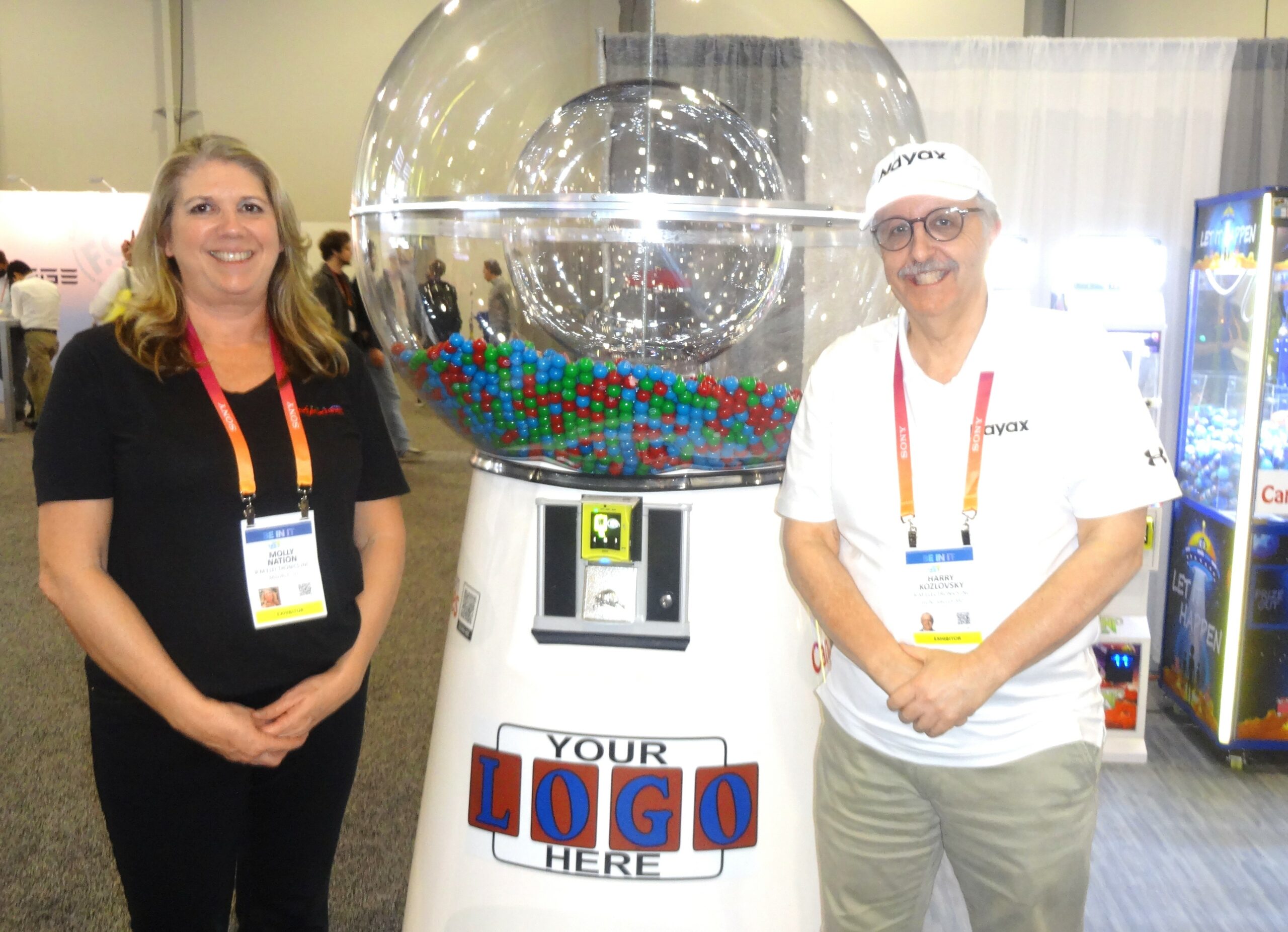
CandyMachines.com, a Midvale, Utah-based division of R M Electronics Inc., presented its giant electronic vending machine that holds 40,000 gumballs, as well as other bulk electronic vending machines featuring the Nayax cashless payment system with multi-pricing and alerts.
The company also displayed its mini crane and other crane machines that use the Nayax technology.
Chowis Co. Ltd.
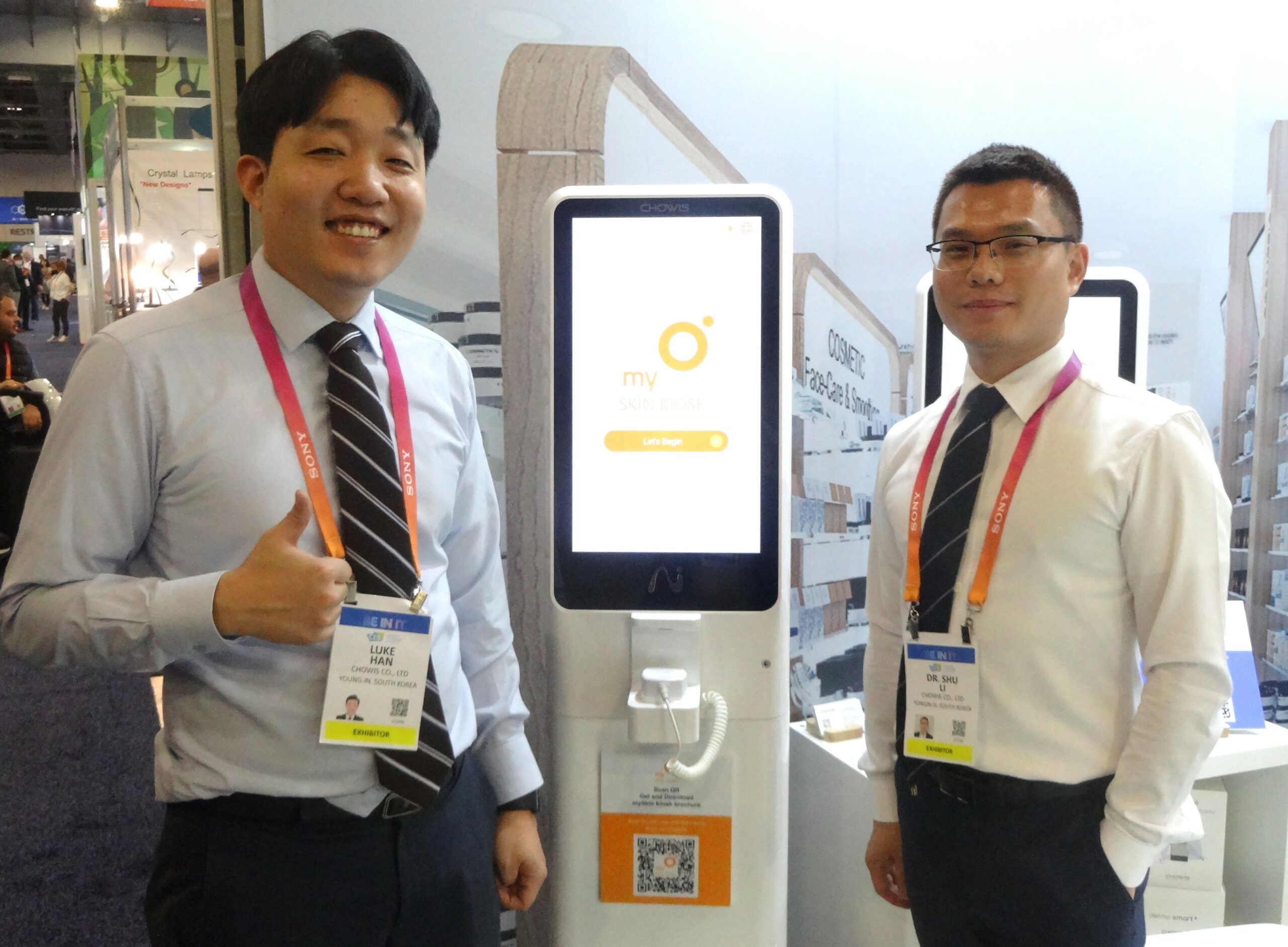
Chowis Co. Ltd., based in South Korea, presented its AI skin diagnosis solution that uses an optical lense and software to deliver a comprehensive view of a person's skin and hair and helps them make better choices with their skin and hair products. The optical lenses use magnification to take images of skin, hair and scalp.
The kiosk application offers a two-way security and usability for both shop owners and customers. A customer management feature available to shop owners collects and secures customer information.
Each optical device contains various image modes with more than 20 LEDs to scrutinize possible skin or scalp bacteria and measures moisture, sebum, oiliness, pores, wrinkles, spots, impurities, radiance, dullness, elasticity, redness, porphyrin and keratin.
The Chowis algorithm analyzes up to 16 parameters and provides an overall facial analysis based on the actual face images.
DeepBrain AI
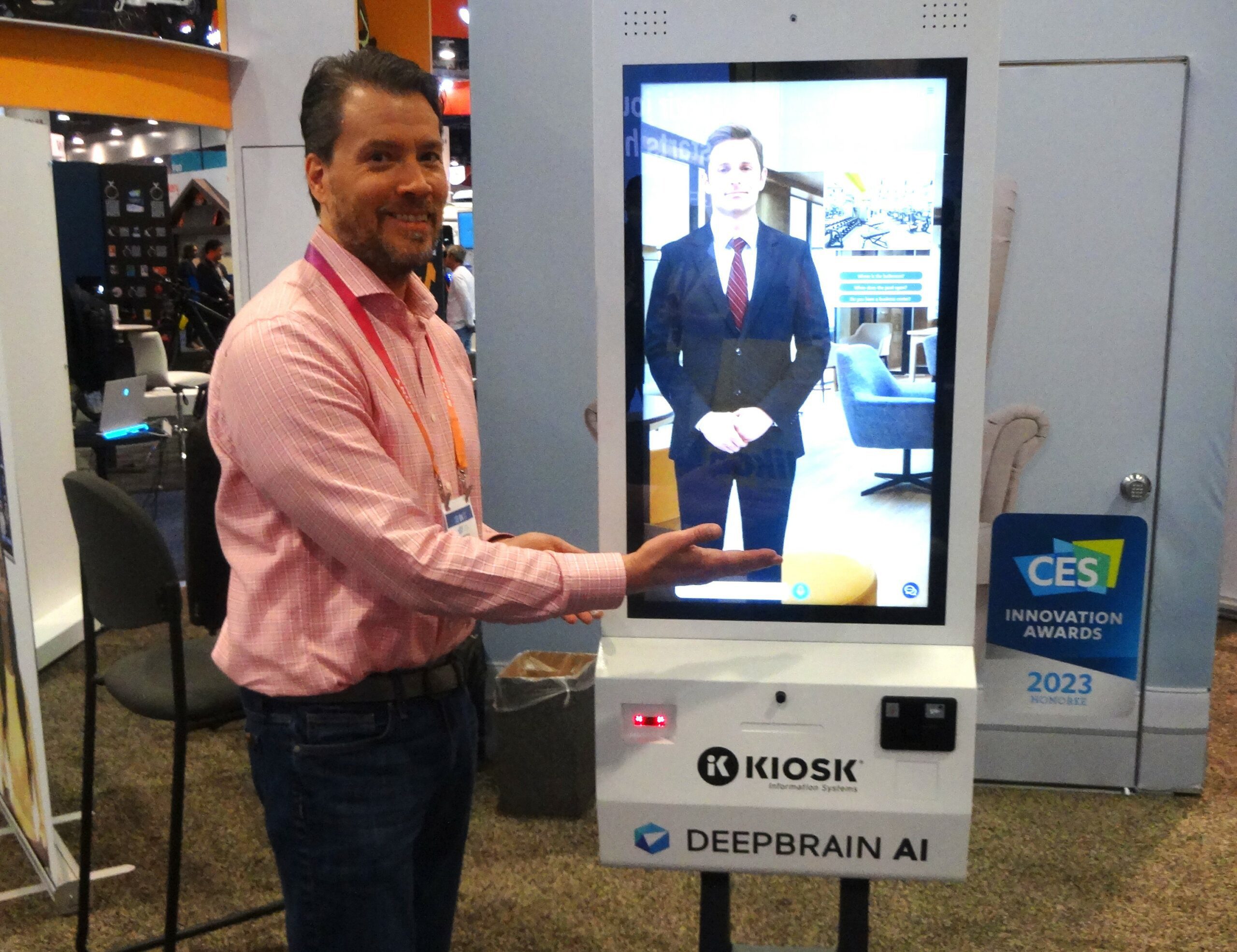
DeepBrain AI, based in Seoul, South Korea, presented its AI human and AI kiosk featuring a two-way conversational AI engine that reduces wait times and increases customer satisfaction with fast, clear responses from virtual humans.
The contactless solution has been deployed at KB Bank in Korea, answering diverse questions about basic inquiries, banking services and more.
DeepBrain AI partnered with Kiosk Information Systems for the kiosk hardware demonstrated at CES.
Dobot
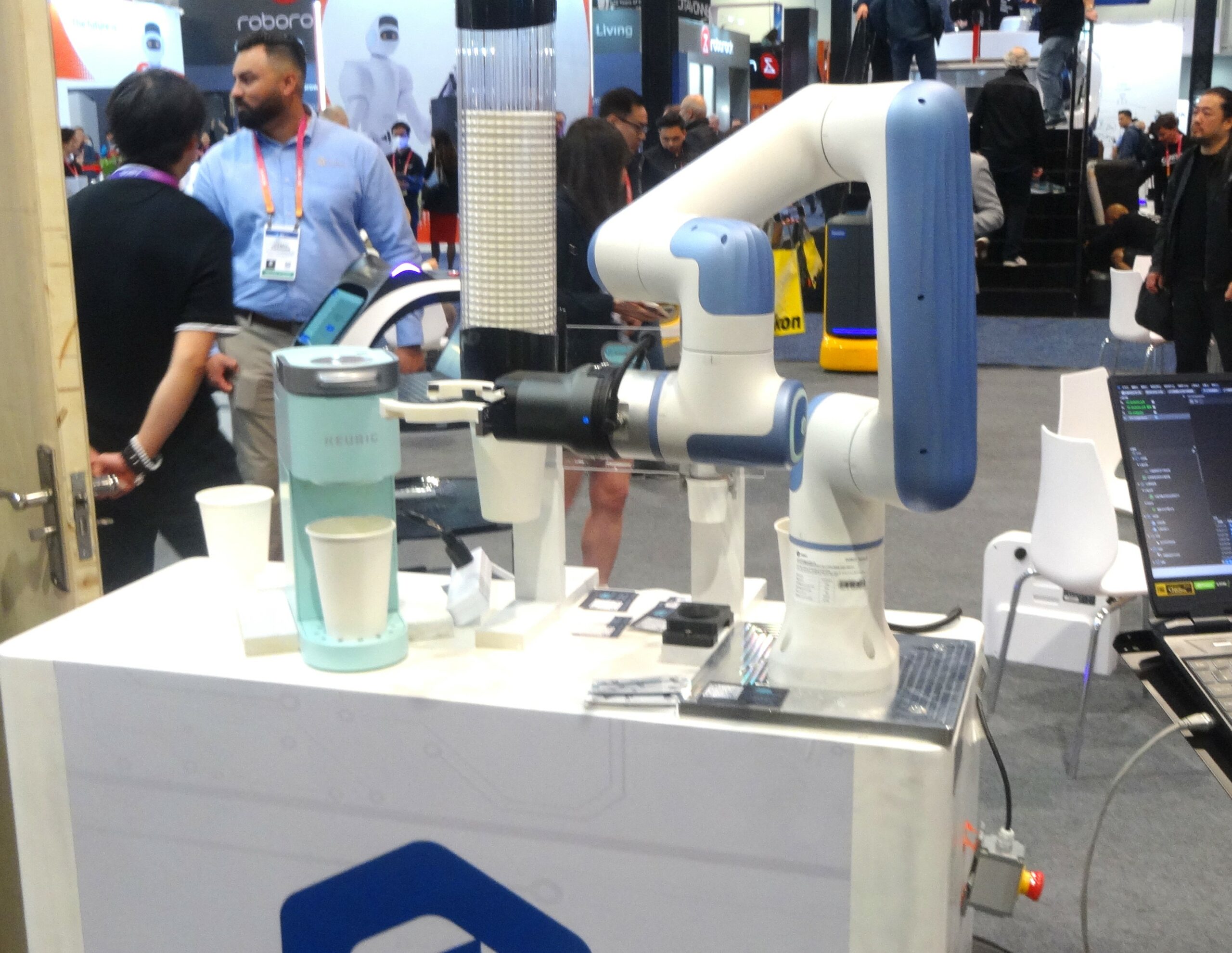
Dobot, a Shenzhen, China-based manufacturer of collaborative robots, presented its Nova 2 and the Nova 5, the first two models in the Nova series with payloads of 2 kg and 5 kg for handling retail and physiotherapy tasks, respectively.
The robot can serve latte, tea, noodles, ice cream and fried chicken. Applications also include massage and ultrasonography.
The robots are equipped with sensors offering adjustable levels of collision detection, along with human emotion sensing and posture freeze upon power shutoff.
Eastman Kodak Co.
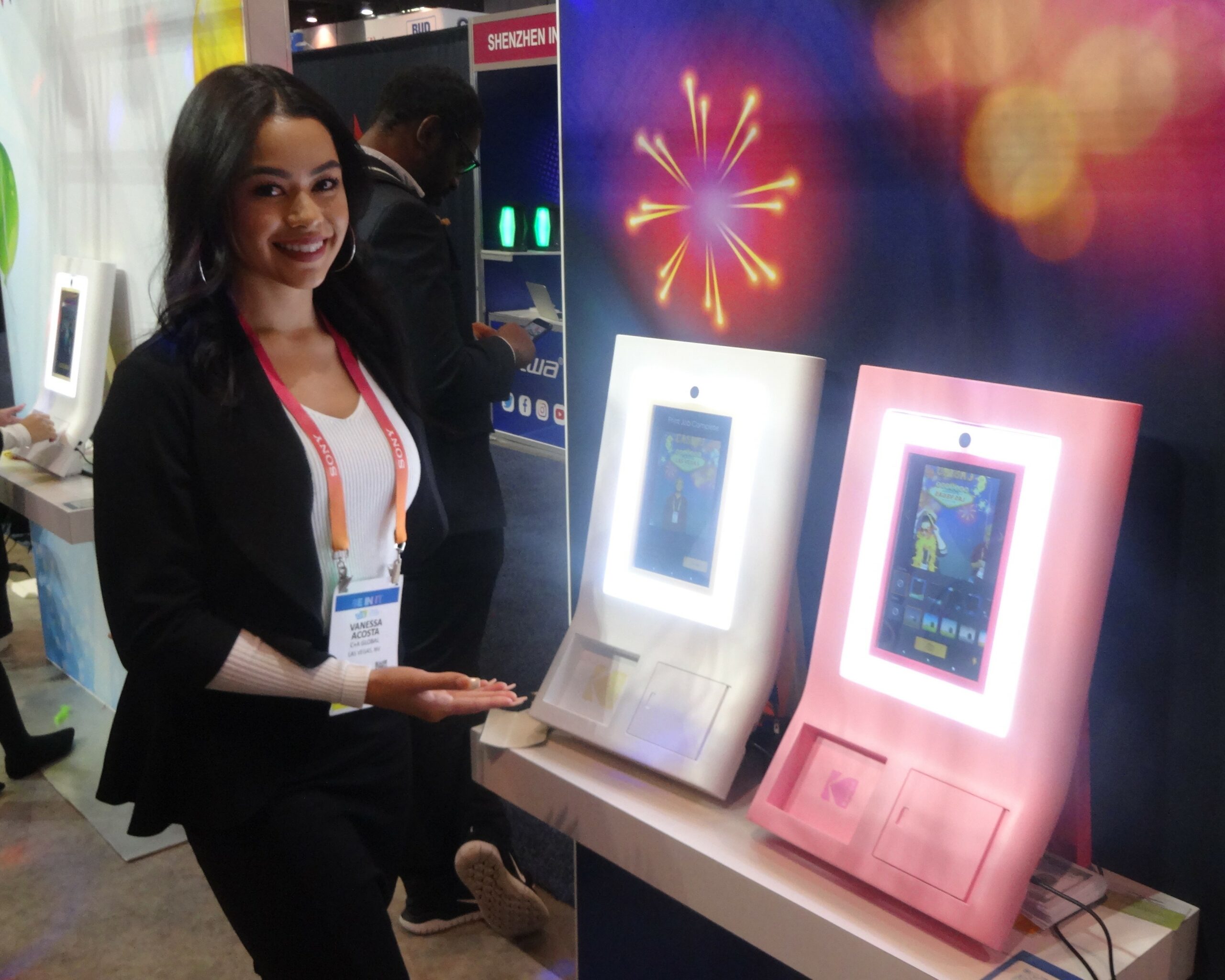
Eastman Kodak Co., based in Rochester, New York, presented its photobooth 3x4 that prints instant prints. The user selects the print frame they want, sets the adjustable countdown timer and says "cheese."
The machine is equipped with an 8MP camera, a built-in LED ring light and produces 1280 x 800 screen resolution, sticky backed photos.
The photobooth can be customized with different themes, layouts and filters.
Ekin
Ekin, an Istanbul, Turkey-based smart city furniture manufacturer, presented its Ekin Spotter, a modular tower for smart cities that applies modules for traffic management, environmental analysis and public safety.
The tower includes cameras, sensors and an independent power source to monitor large areas and record high resolution videos while surveilling at night using its own illumination.
The Spotter notifies a central system of any unusual condition changes, such as increased temperature, humidity, tampering or unauthorized door opening.
With its AI-based technology, Ekin provides quantitative data for smart living, public safety and traffic management categories to state and federal authorities, as well as private institutions. Such data enables authorities to make decisions that generate sustainable growth, improve quality of life and ensure the security of its citizens.
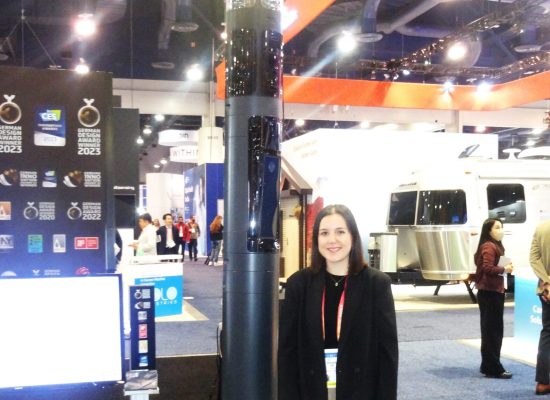
Eneridge
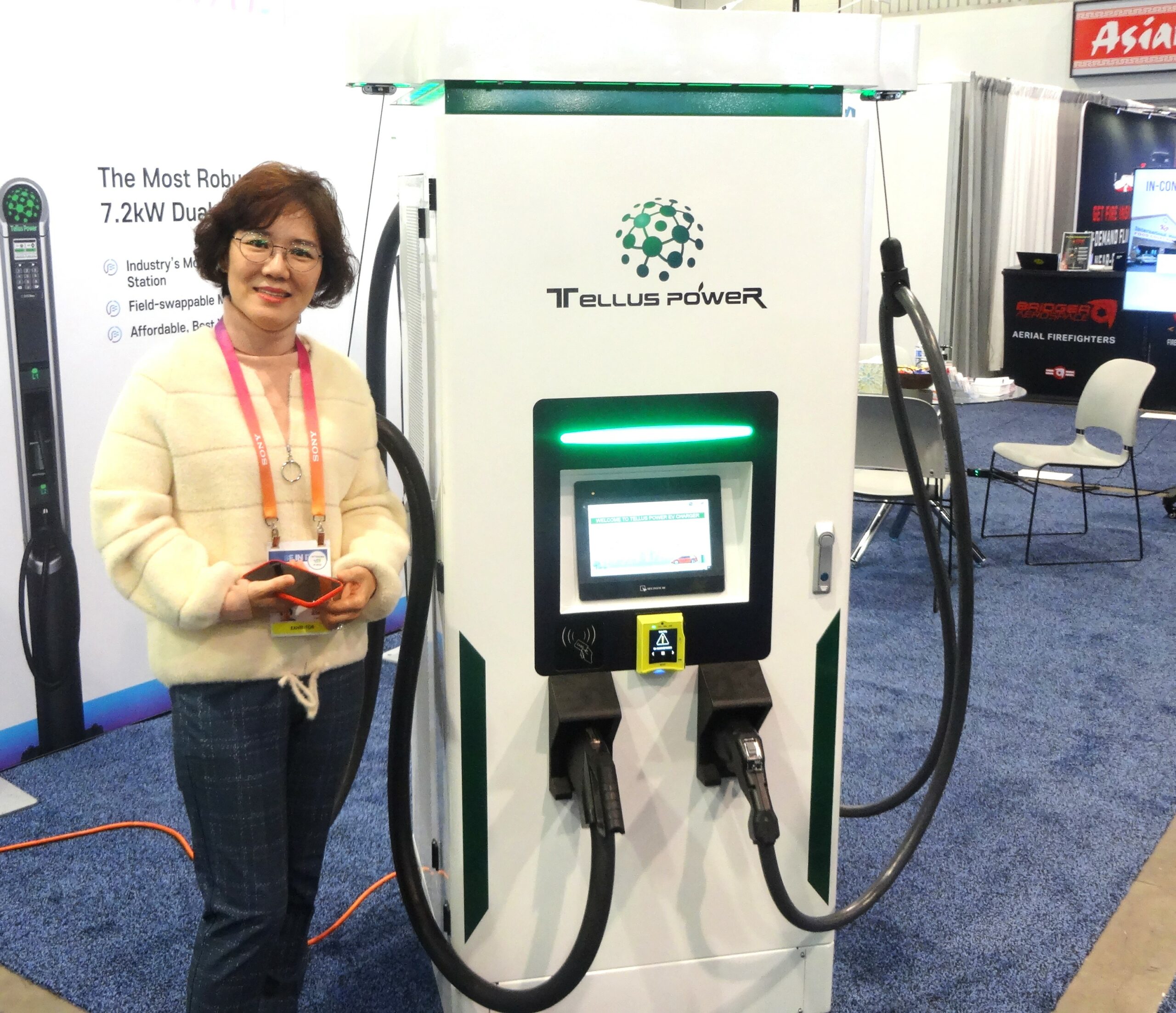
Eneridge, a Santa Fe Springs, California-based EV charging station manufacturer, presented its Flitway EV charging stations, ranging from Level 2 chargers to 360kW ultrafast chargers for public and fleet use.
The company owns and operates charging stations with its own network, including hardware, a cloud-based platform and installation to clients that wish to own and operate their own EV charging stations.
The company was awarded a California Energy grant in 2021 after demonstrating a battery-integrated ultra-fast charger and began to deploy two 150kW chargers in each of three locations utilizing available electric capacity in existing electrical distribution or by replacing existing Level 2 chargers without any electrical equipment upgrade.
The company plans to deploy more than 3,000 EV chargers across the U.S.
EVBox
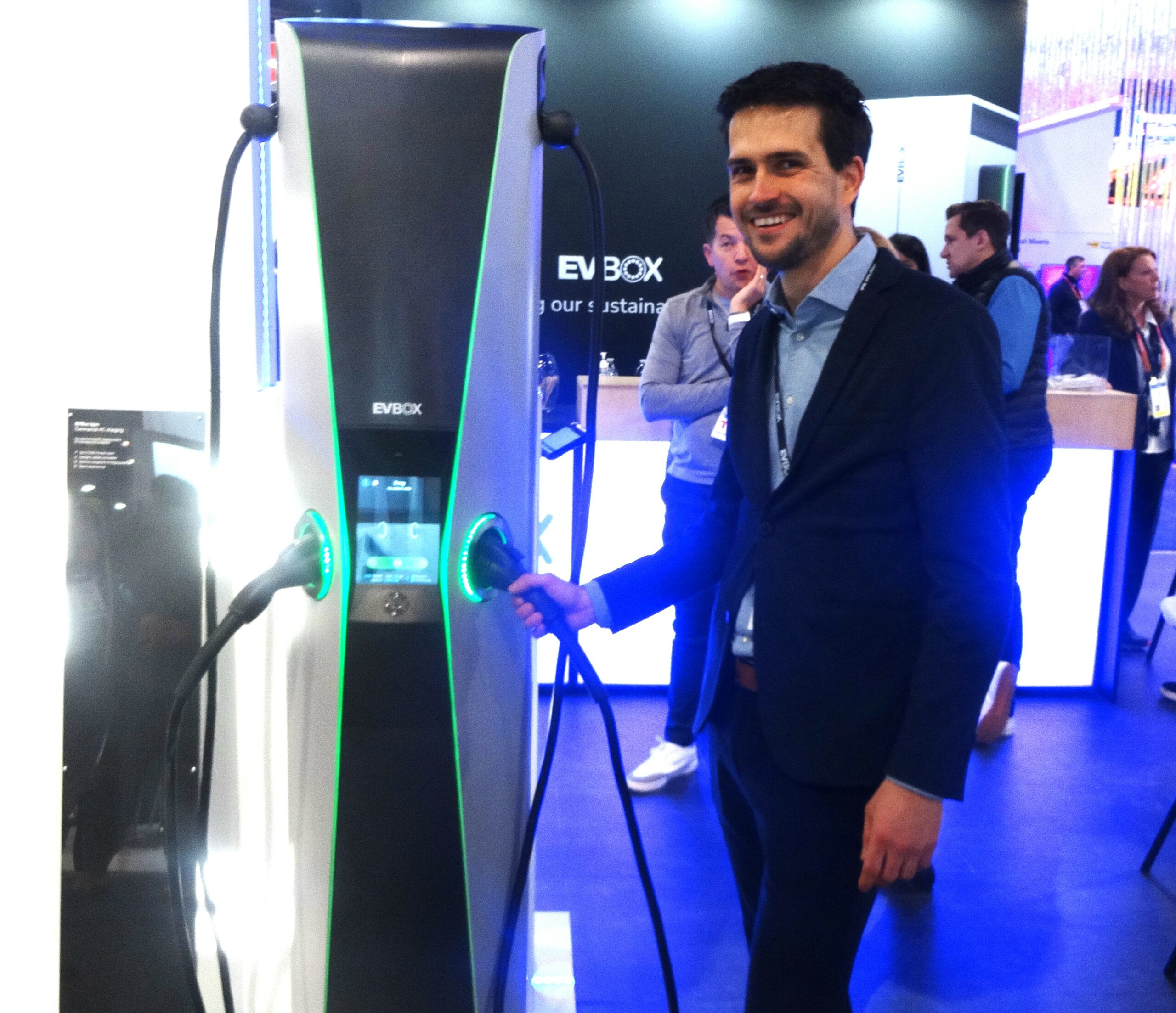
EVBox, based in the Netherlands, introduced its EVBox Iqon EV charging station, featuring stainless steel housing, LED light guides, ADA compliance and built-in cable retractors.
The unit also features a multi-language touchscreen to display pricing, usage and access information.
The built-in overcurrent protection and autolocking cable docks that prevent tampering ensure the charging environment will remain safe.
Users can initiate charging sessions using RFID or QR code.
The built-in kWh meter enables operators to track station usage and schedule reductions in output with accuracy.
Formlabs
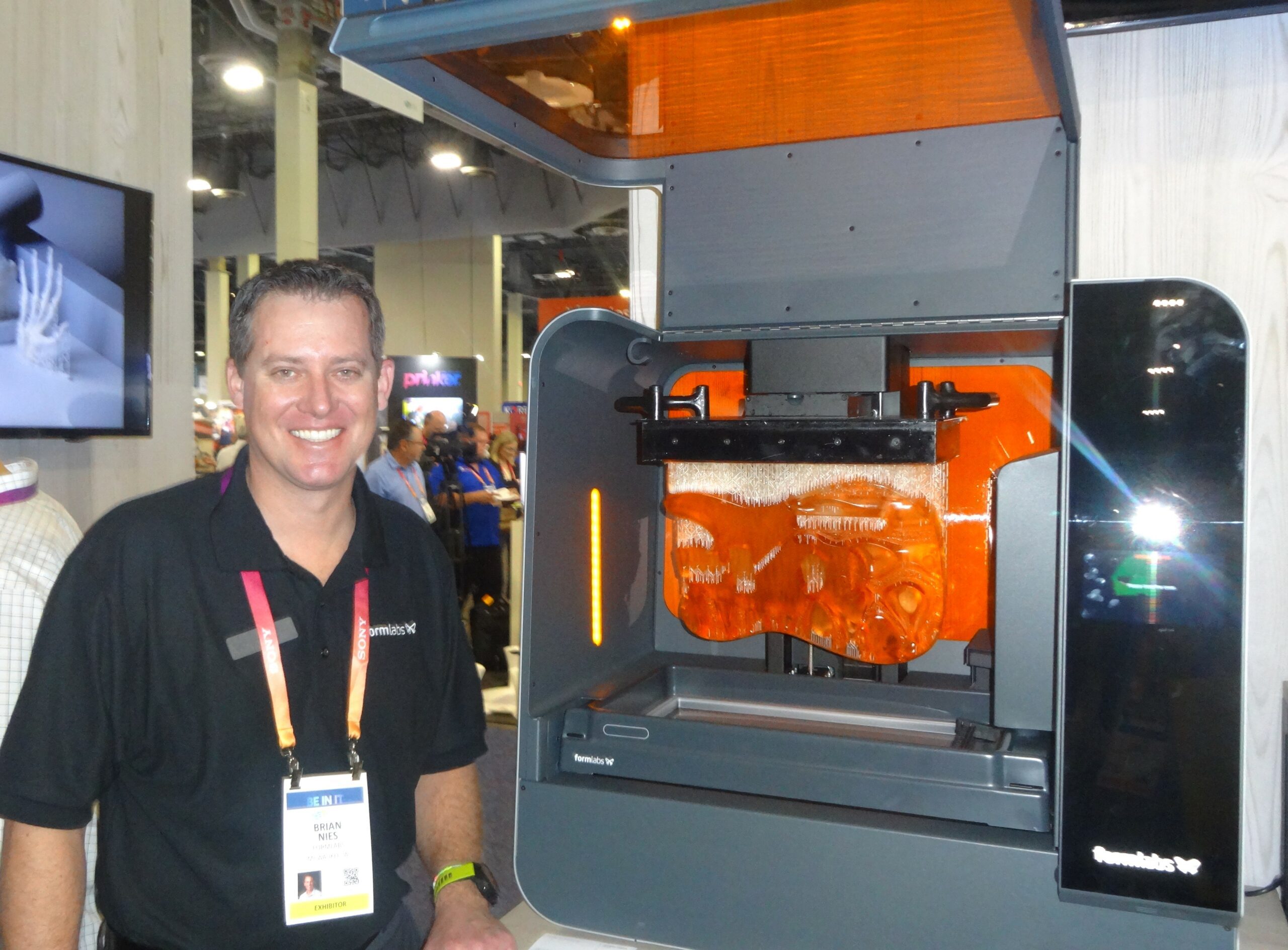
Formlabs, a Somerville, Massachusetts-based 3D printer manufacturer, presented Form 3L, a large format 3D printer that features two light processing units inside the printer to achieve consistent accuracy and detail across the build platform.
The printer offers automatic print setup, automatic resin dispensing and a 5.5-inch high-resolution touchscreen interface.
The print preparation software automatically suggests orientation, supports and layout, with the ability to refine manually if needed.
The light processing units, rollers, optics window and other components can be replaced as needed.
G3D
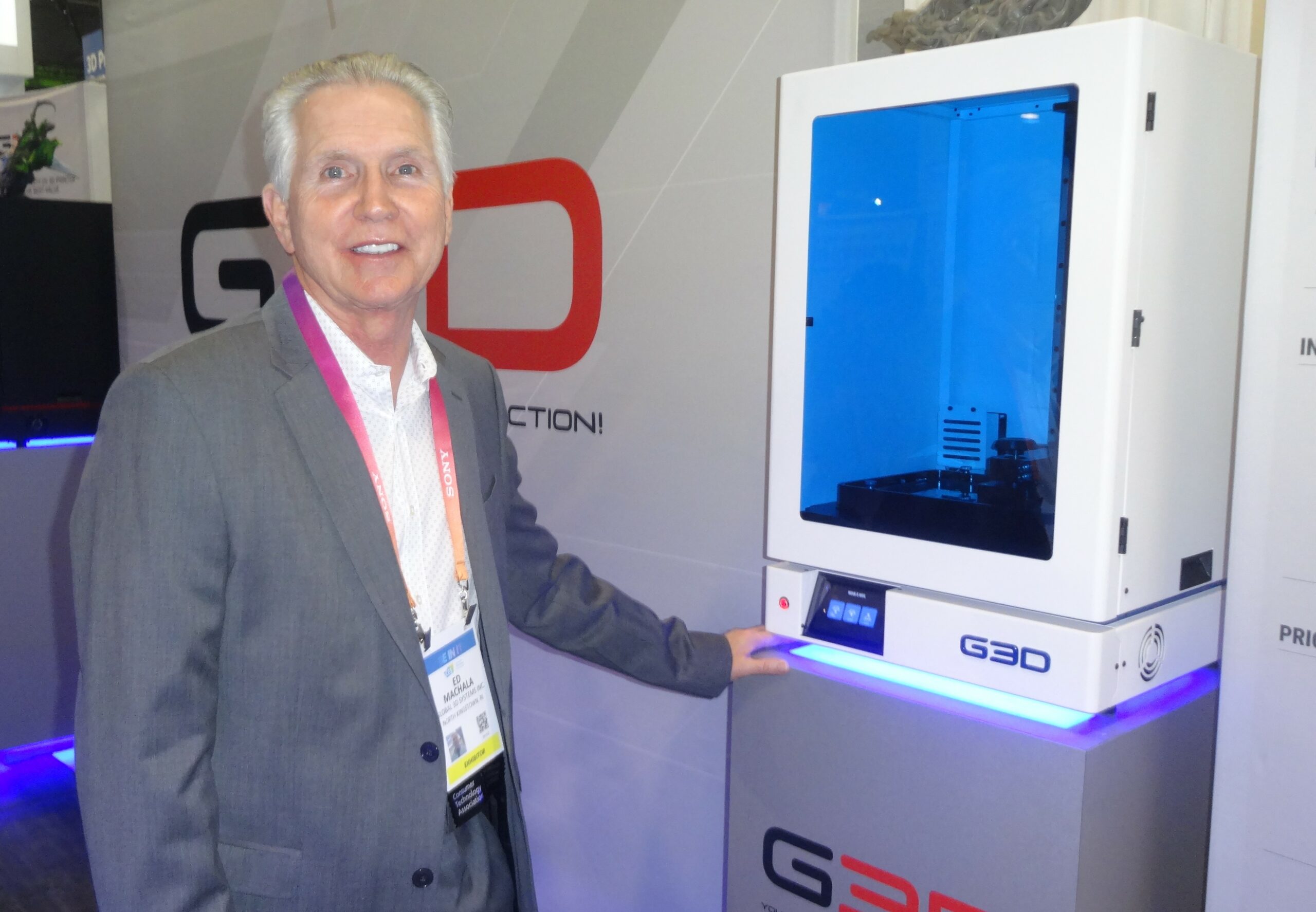
G3D, based in The Philippines, introduced its latest 3D printer, the T-2000, which uses liquid crystal displays and ultraviolet light to allow the printing of three-dimensional objects. The printer uses masked SLA technology.
The maximum build volume is 13.6 by 7.65 by 16 inches or 11.57 by 6.8 by 16 inches.
The maximum print speed is 1.8 inches per hour.
The XY resolution, the smallest movement that a print head can make on the plane, is 76.5 to 90 microns.
Layer height is 8 to 120 microns.
The machine has been used for printing art objects, prototypes and medical tools.
Harborlockers
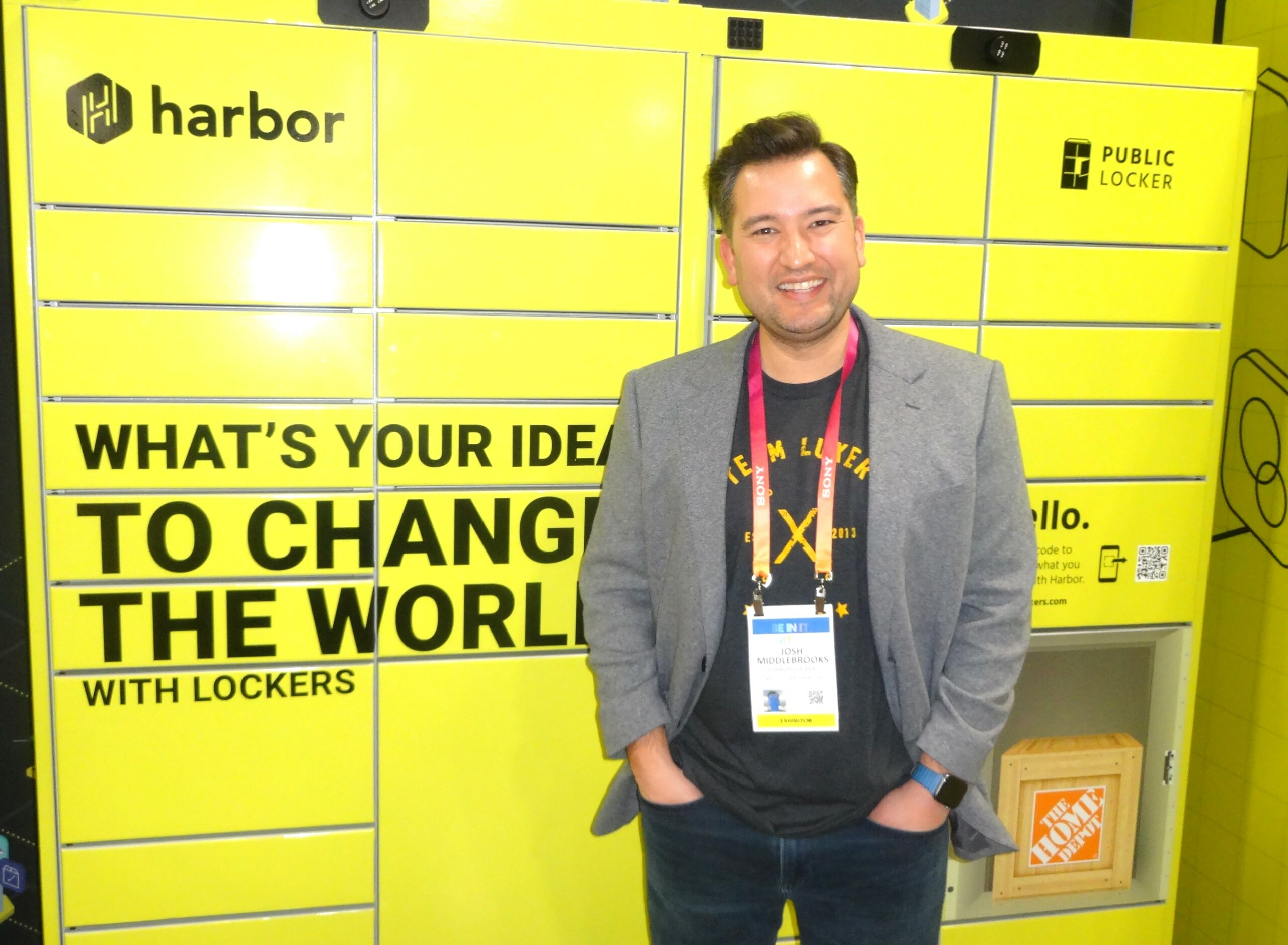
Harborlockers, based in Sacramento, California, offers modular lockers for drop off, storage and pickup services. The company offers network ready, indoor and outdoor lockers that do not require power or an Internet connection.
The lockers are 76 inches high, 37.5 inches wide, 23 inches deep and weigh 500 pounds.
The company offers development grants to encourage entrepreneurs to expand into public lockers and build locker based applications, marketplaces or anything else to further the Harborlockers ecosystem.
The company is a subsidiary of Assa Abloy, a global provider of asset solutions.
Holo Industries LLC
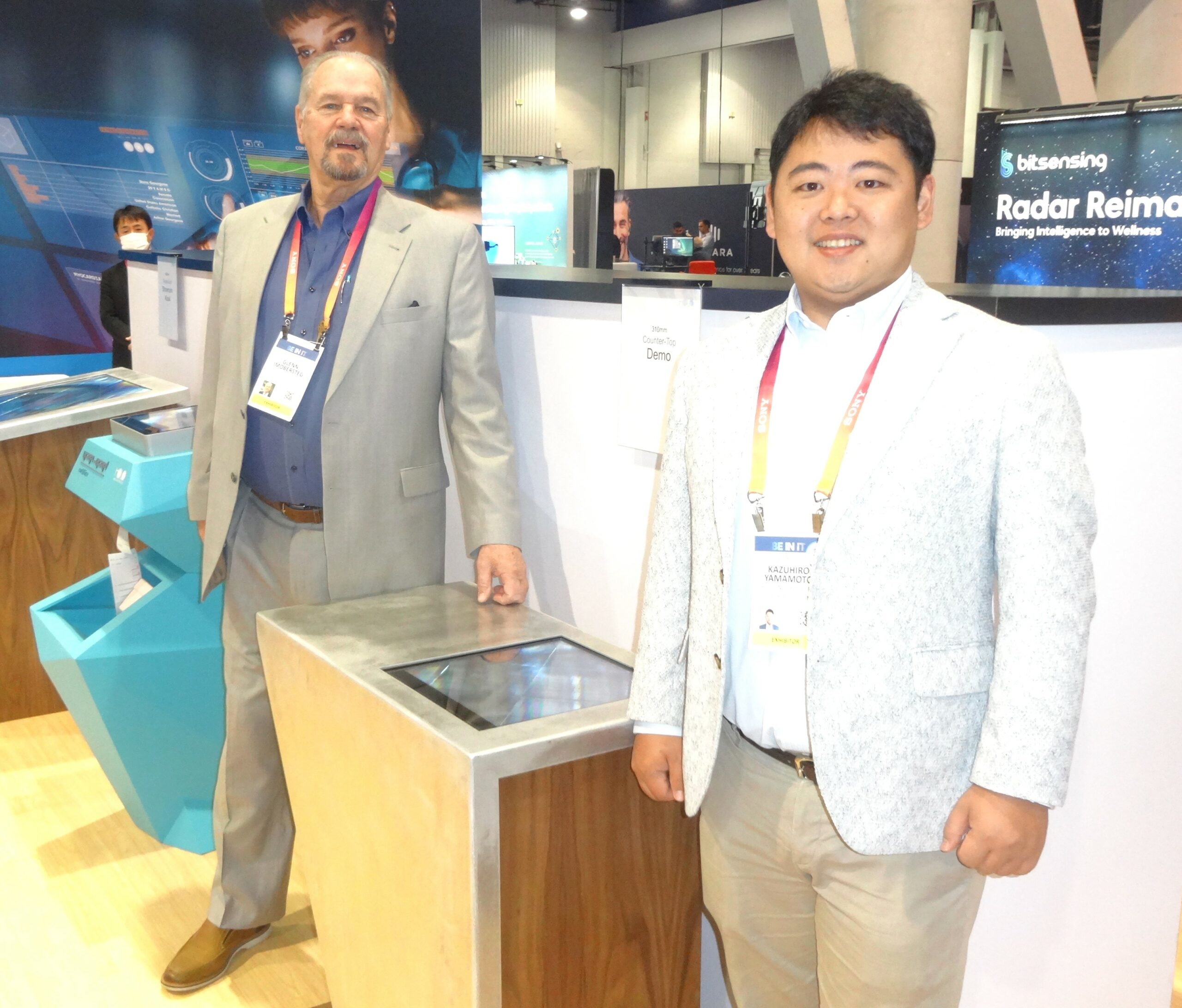
Holo Industries LLC, based in Cottage Grove, Oregon, presented kiosks equipped with holographic touch to provide customers and employees with a more responsive user interface. Instead of merely viewing a holograph, users can access images and data, scroll, enlarge, pinch, sign their name, order products and pay in midair.
Holographic touch provides accurate and responsive midair interaction without the use of special lighting, glasses or headgear. The interactive holograms expand beyond holographic imagery that provides visual and auditory stimulation but is both interactive and responsive.
The company’s products integrate with modules into existing countertops or wall units and can connect to terminals or CPUs to display holographic images or videos.
Huenit
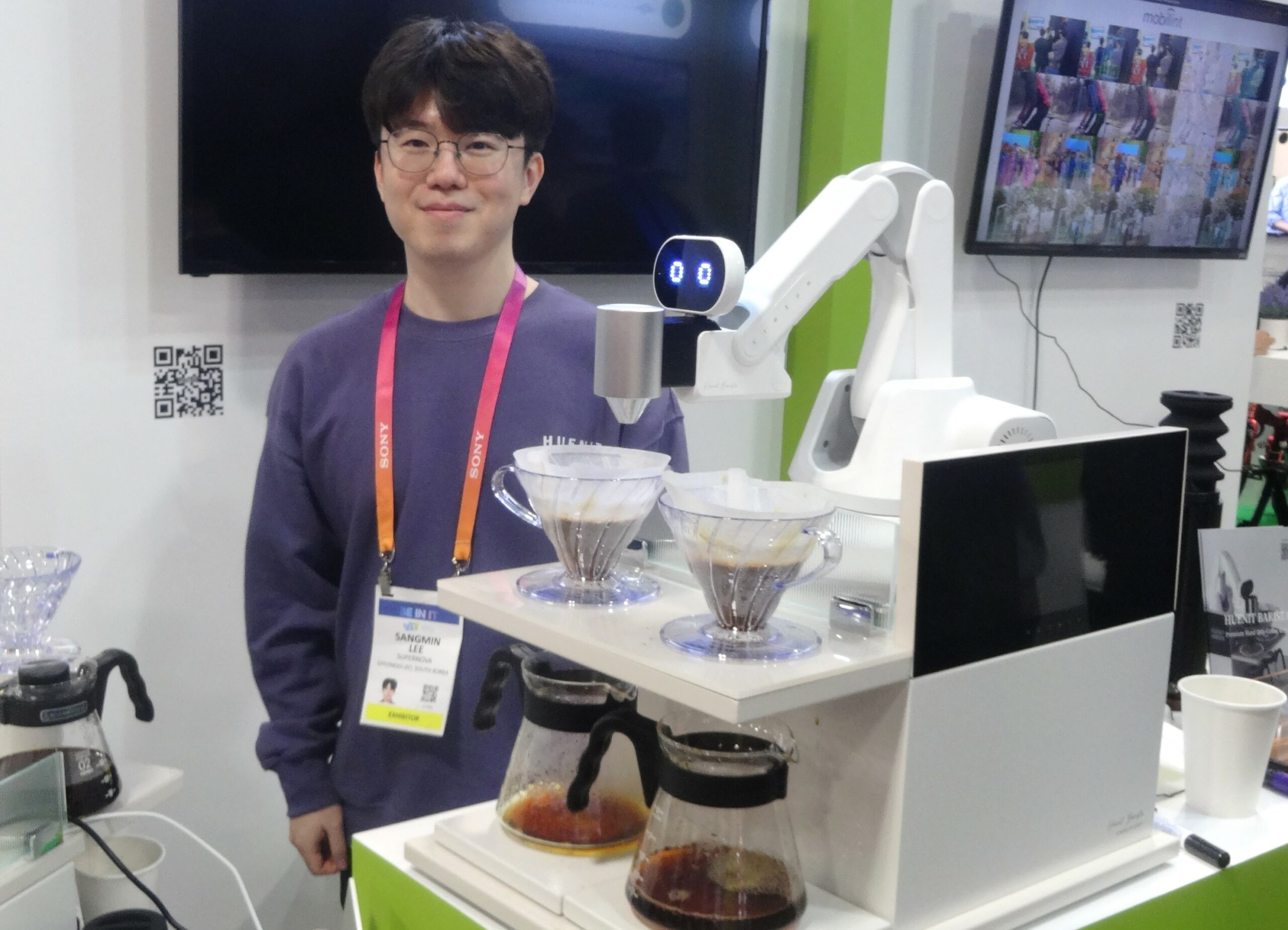
Huenit, a Seoul, South Korea-based manufacturer, presented its hand drip coffee robot. The robot recognizes and greets customers using an AI powered camera. The camera supports real time image recognition and voice recognition through its built-in microphones.
There are no buttons or setting required. The auto-sensing system handles the process.
The AI system recognizes coffee beans and automatically selects a hand drip recipe.
Factors affecting the taste of the coffee include water temperature, extraction pattern, extraction amount and drop. All factors can be adjusted in real time and can be customized.
Nextpayments Inc.
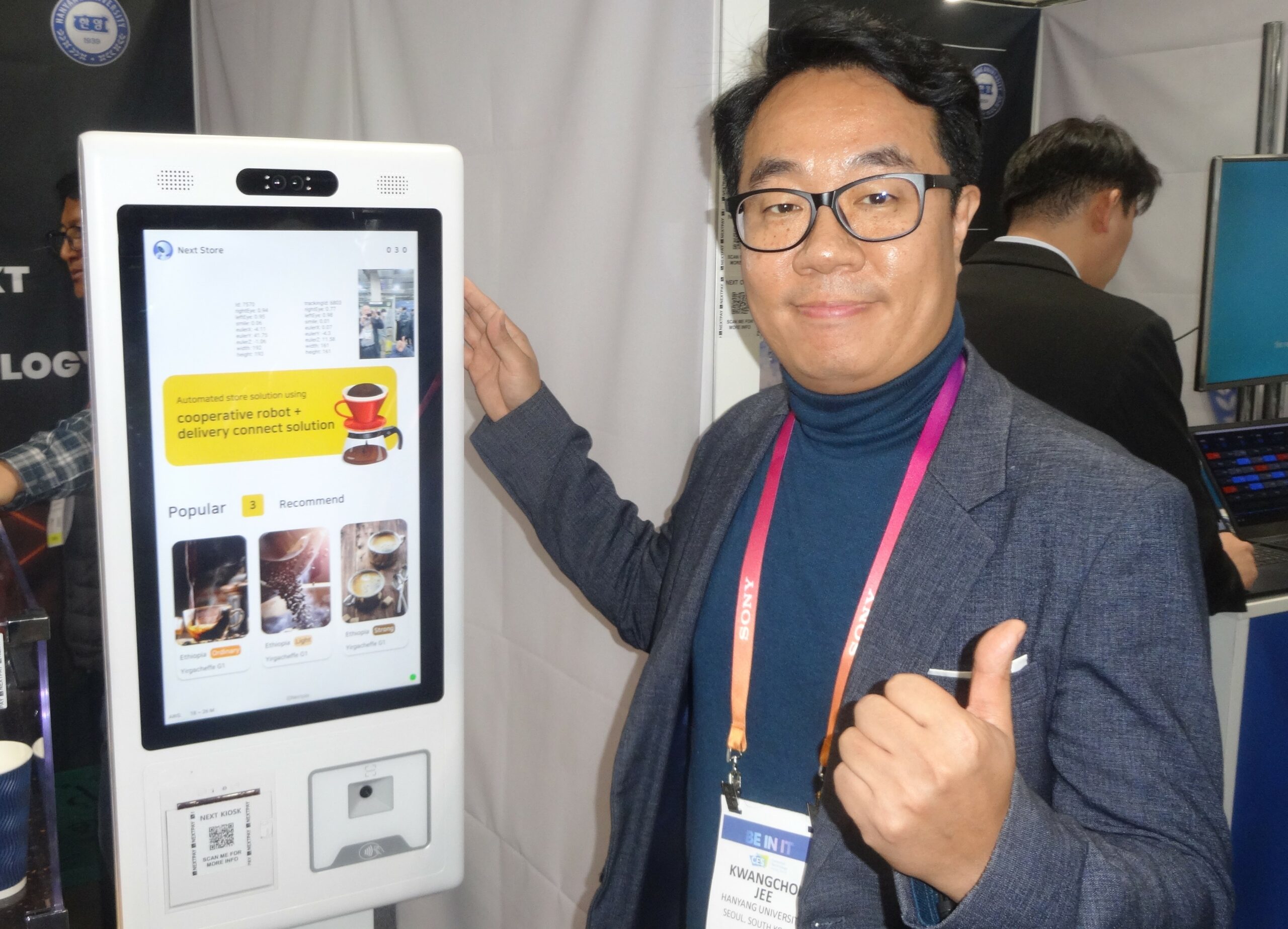
Nextpayments Inc., a Seoul, South Korea based retail technology provider, presented its self-order kiosk which integrates with its POS device, mobile POS, delivery app and rider automatic call in. The AI powered kiosk recognizes customers’ faces and recommends products.
The kiosk supports face recognition payment, QR code payment and NFC payment and features a built-in Seiko thermal printer with an automatic cutter.
The company also offers a robotic barista cafe, a fully automatic store operation that can process integrated online and offline orders.
Nuvilab
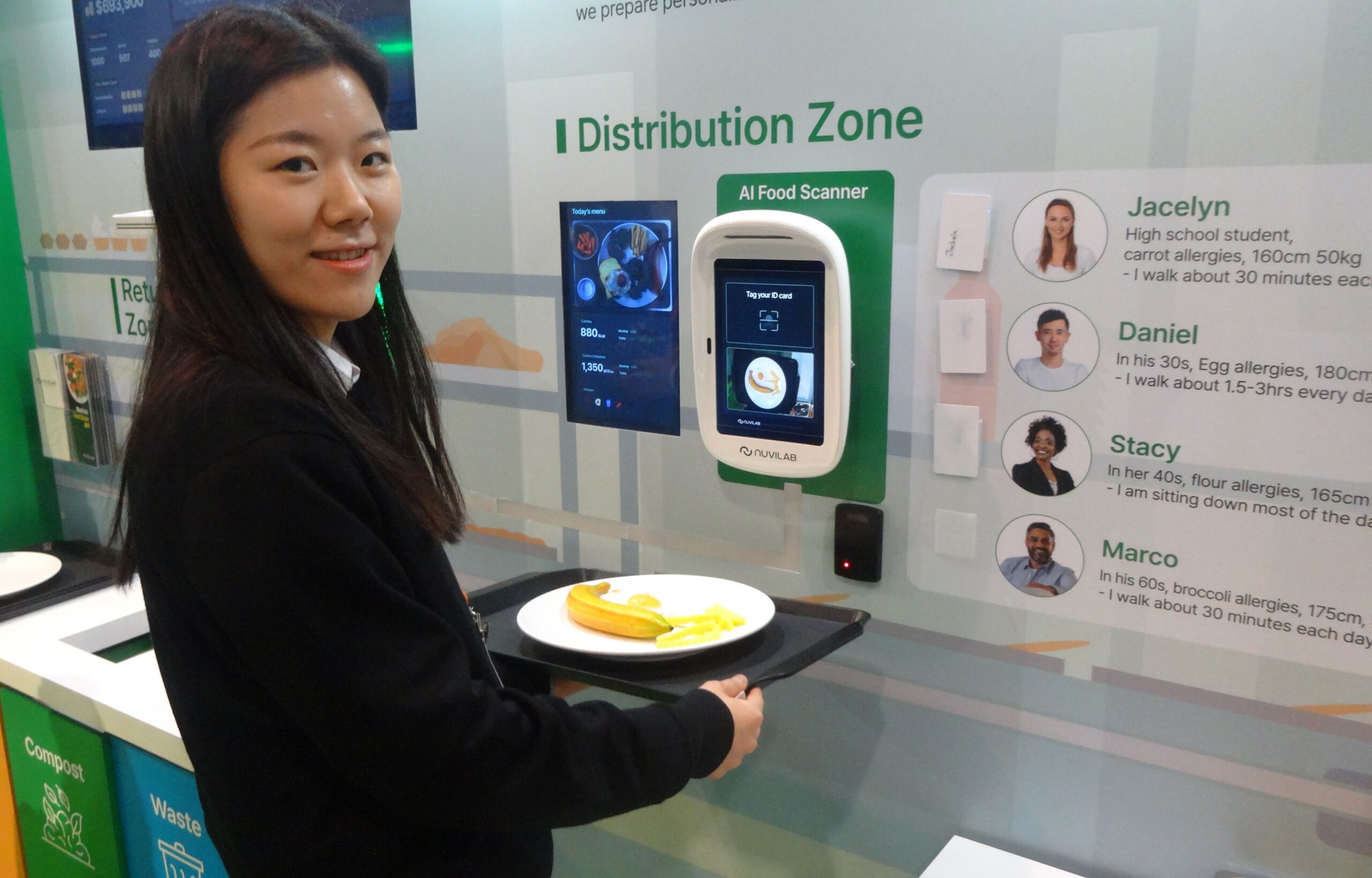
Nuvilab, based in Seoul, South Korea, presented its wall mounted AI food scanner that identifies various types and amounts of food by 1-second scanning. The user can scan their plate of food to see calories and amounts in grams of all the different food items on their plate. The device can also be used in the kitchen to identify the amount of waste on returned plates.
The Nuvilab cloud-based data analysis provides information on the composition of food waste and other metrics. The system improves cost reduction, carbon emission reduction, food data analysis and personal eating habit management.
Ottonomy
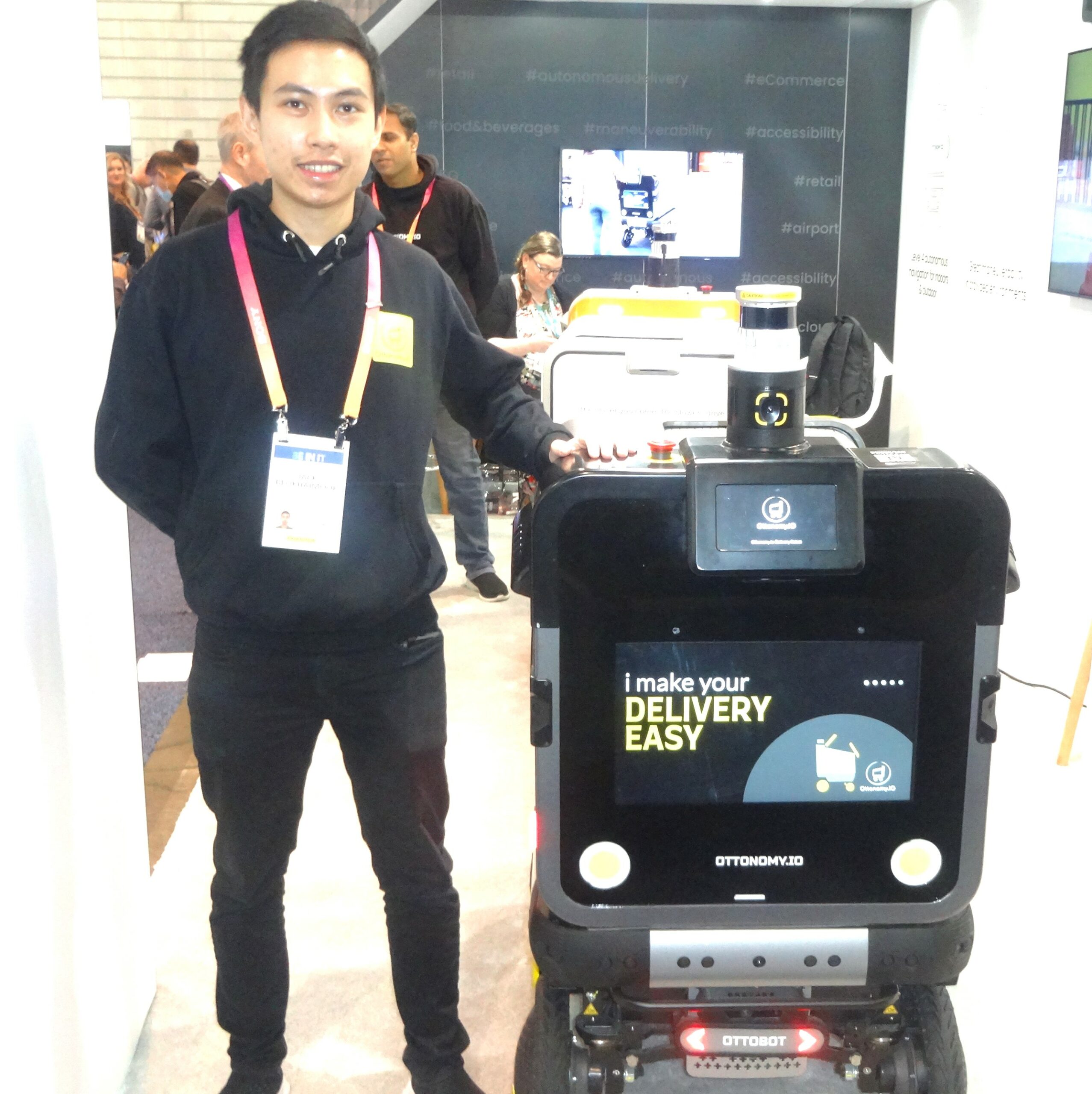
Ottonomy, a Brooklyn, New York-based autonomous delivery robot manufacturer, presented its delivery robot ecosystem that allows users to launch, manage and control a fleet of robots using a network operations console which can integrate with point-of-sale and ERP systems.
The user places an order at a POS station. The order is then prepared and loaded in the robot. The robot travels and navigates to its destination, at which point the customer is notified via email or text.
The customer then scans the QR code on the robot to retrieve their item.
The behavior based navigation technology allows accurate mapping, enabling the robots to safely navigate in crowded environments.
The robots are available on a “Robots as a Service” model.
Pantum
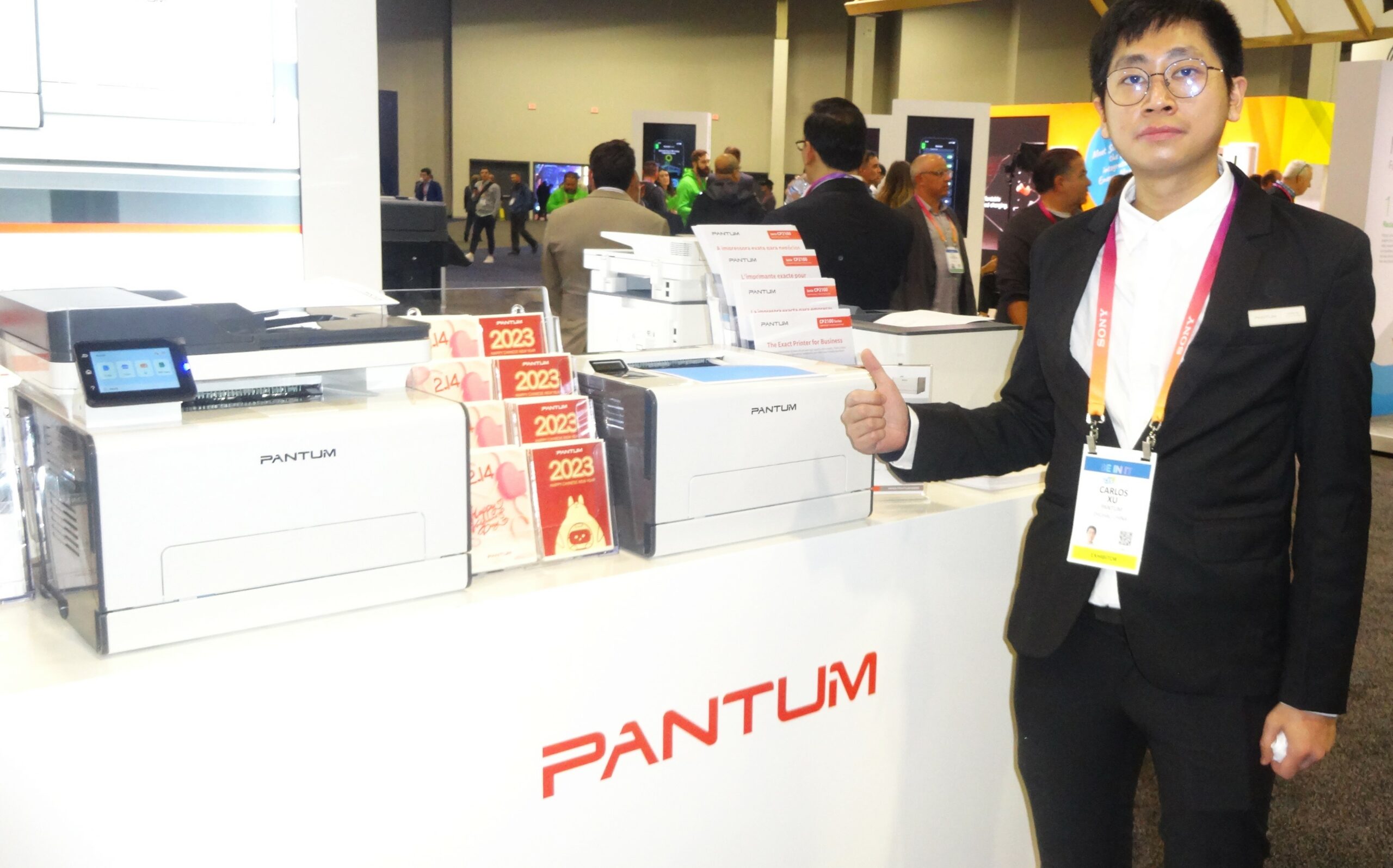
Pantum, based in Guandong, China, introduced its CP2100 series color single function laser printer and its CM2100 series color multifunction laser printer.
The printers feature:
- One-step installation.
- Print speed of 20ppm (A4)/21ppm(letter).
- Printer language: GDI.
- Maximum monthly duty cycle: 30,000 pages.
- Paper input capacity: 250 pages.
- Paper output capacity: 100 pages.
- Multipurpose tray: 1 page.
Repla
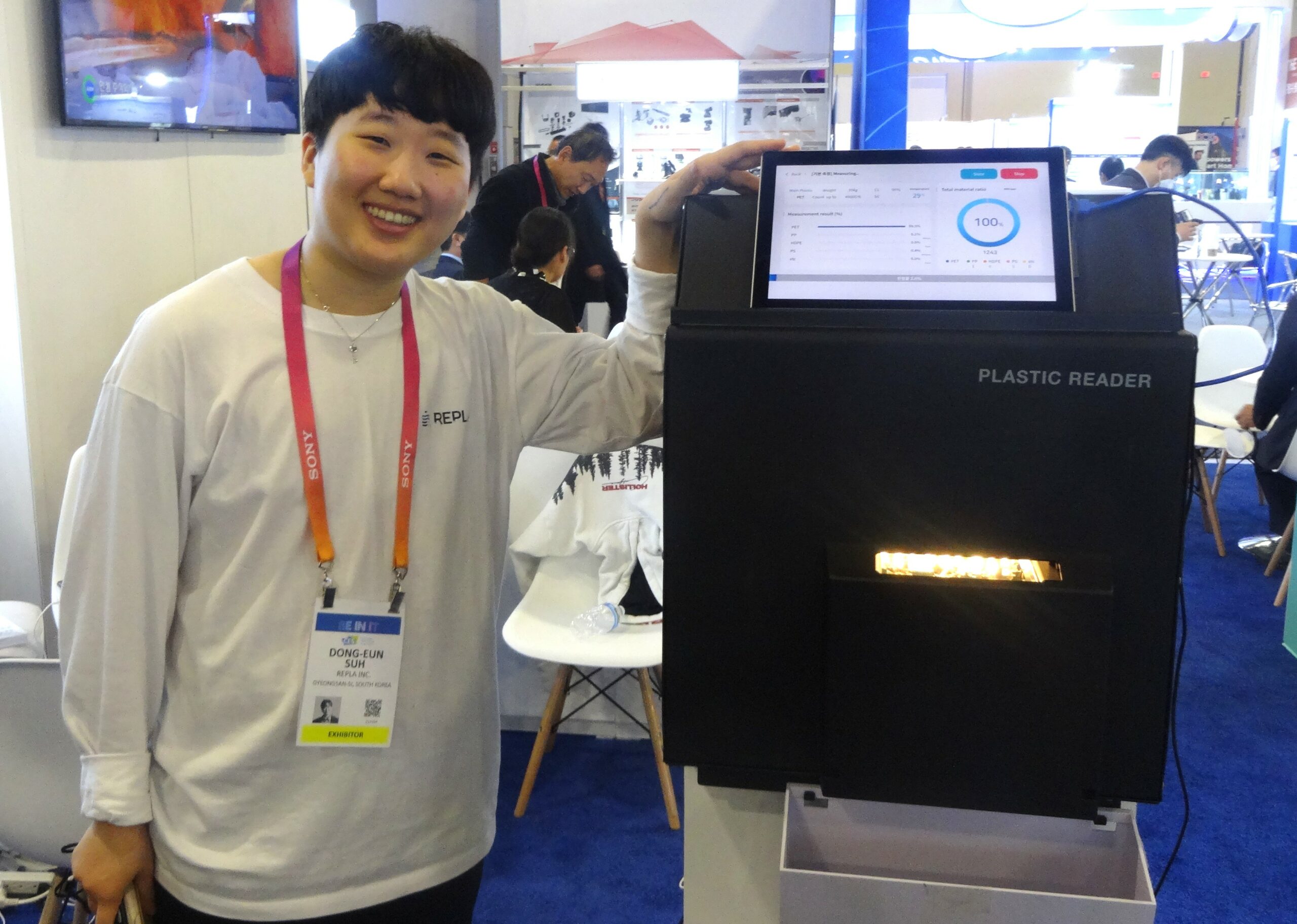
Repla, based in Seoul, South Korea, introduced its plastic reader to enable efficient plastic recycling. After the plastic object is shredded, a remotely controlled device measures the quality of recycled plastic flakes by checking the final purity of selected flakes.
The plastic scanner verifies which type of plastic an object is made of.
The system raises the purity of a plastic material when it is recycled through bacteria that decompose other plastic materials.
The company plans to introduce plastic purity enhancing equipment to about 3,000 plastic recycling plants in South Korea.
Rightech Robotics
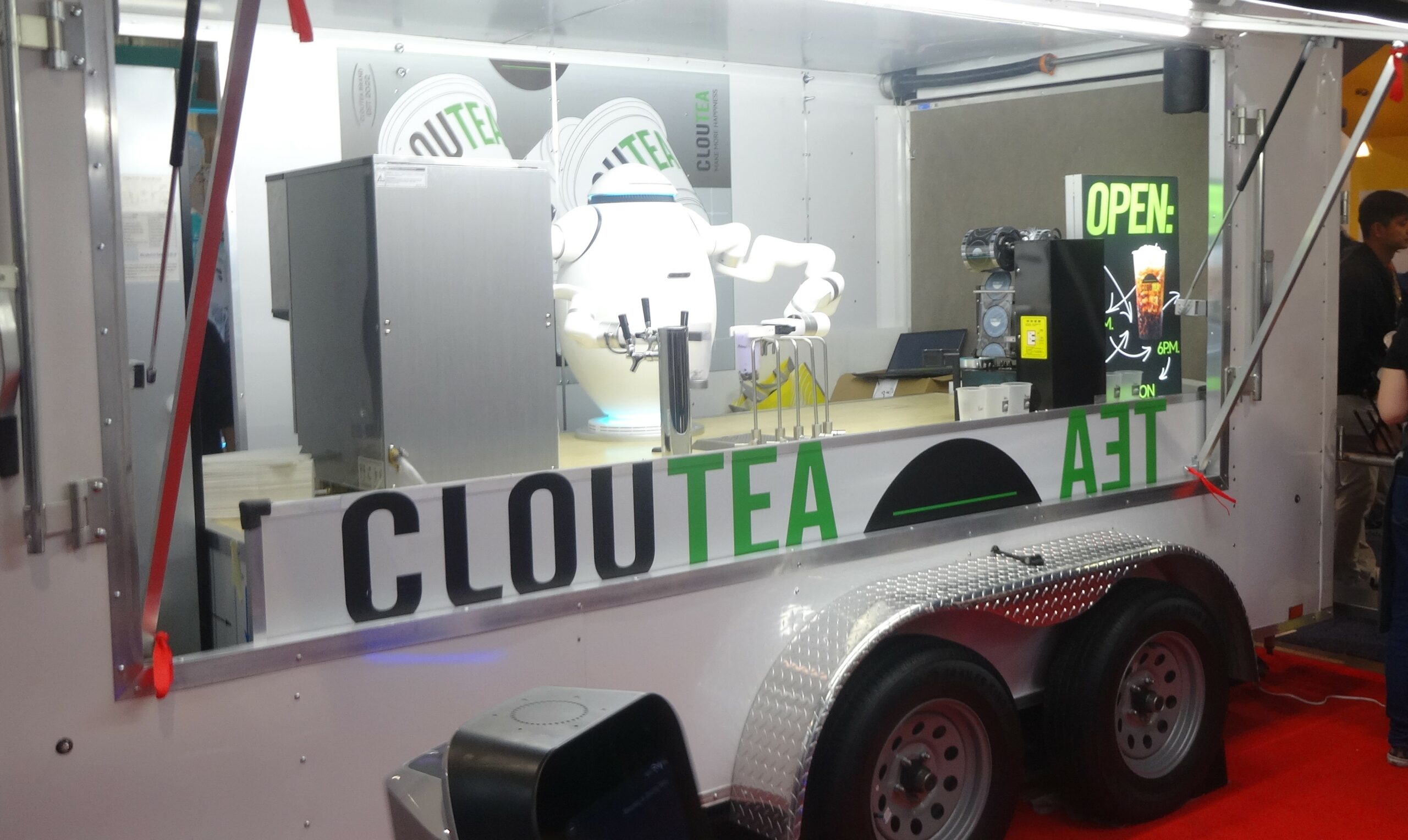
Rightech Robotics, with offices in Las Vegas and Austin, Texas, demonstrated Adam the robot that can craft over 100 types of beverages. The robot can simulate the movements of a bartender or barista.
Acting as a bartender, the robot can make draft beer, wine, shots and cocktails.
As a barista, the robot can connect with traditional coffee machines or IoT enabled machines to serve hot coffee, iced coffee, cold brew coffee or nitro brew coffee.
As a boba tea maker, the robot can make a classic milk tea with tapioca pearls or a creative twist on a traditional favorite.
Stern Pinball Inc.
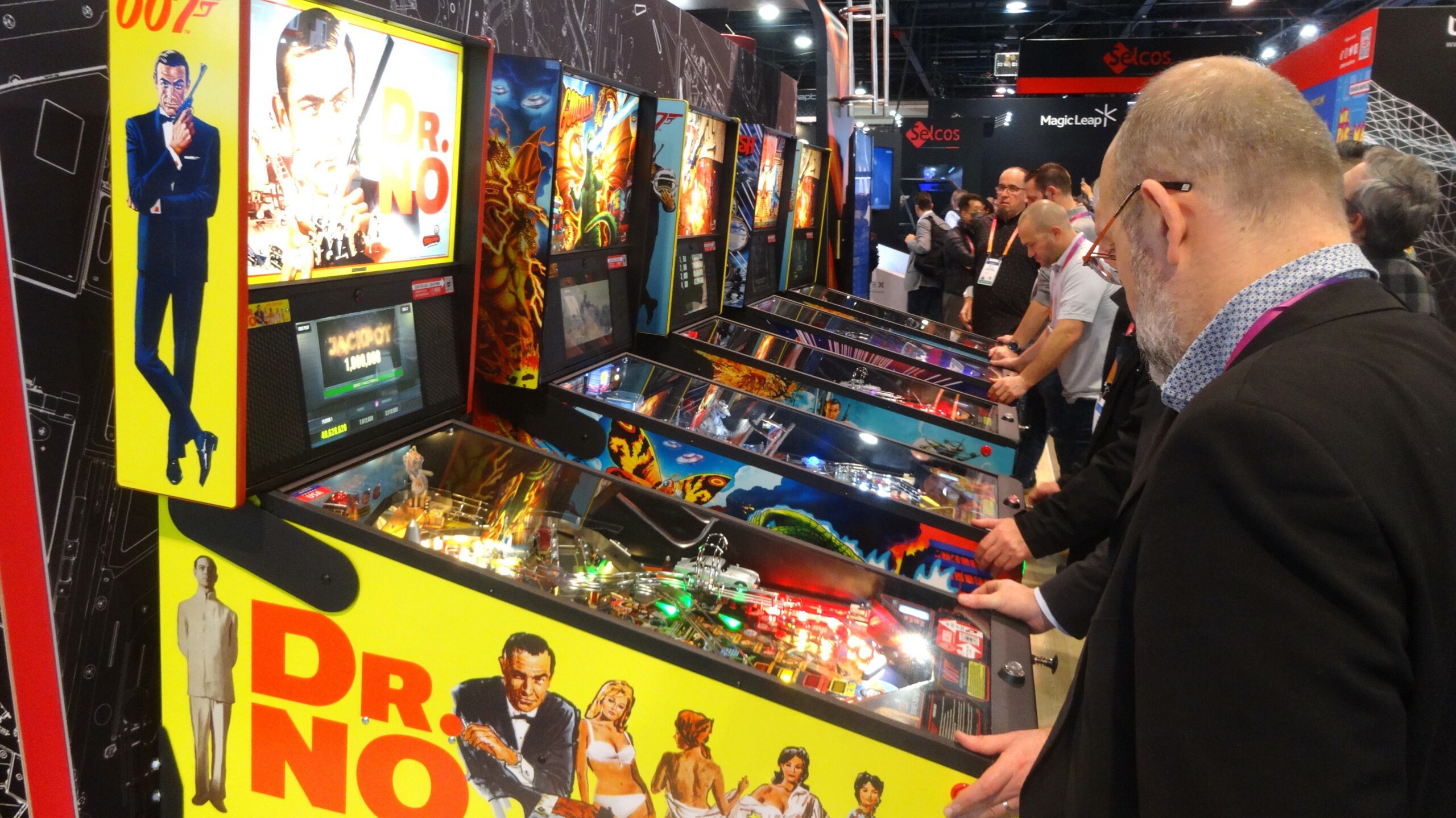
Stern Pinball Inc., based in Elk Grove Village, Illinois, demonstrated its James Bond 007 pinball machines featuring 1960s James Bond movies.
The collectible cornerstone Limited Edition includes an exclusive full-color mirrored backglass inspired by the “Thunderball” movie, cabinet artwork, custom high gloss and powder-coated pinball armor, a custom designer-autographed bottom arch, inside art blades, an audio system, anti-reflection pinball playfield glass, shaker motor, a sequentially numbered plaque and a certificate of authenticity signed by Stern Chairman Gary Stern and President Seth Davis.
The James Bond 007 machines include Stern’s Insider Connected system which enables players to interact with the game and a global network of players.
The Greet Inc.
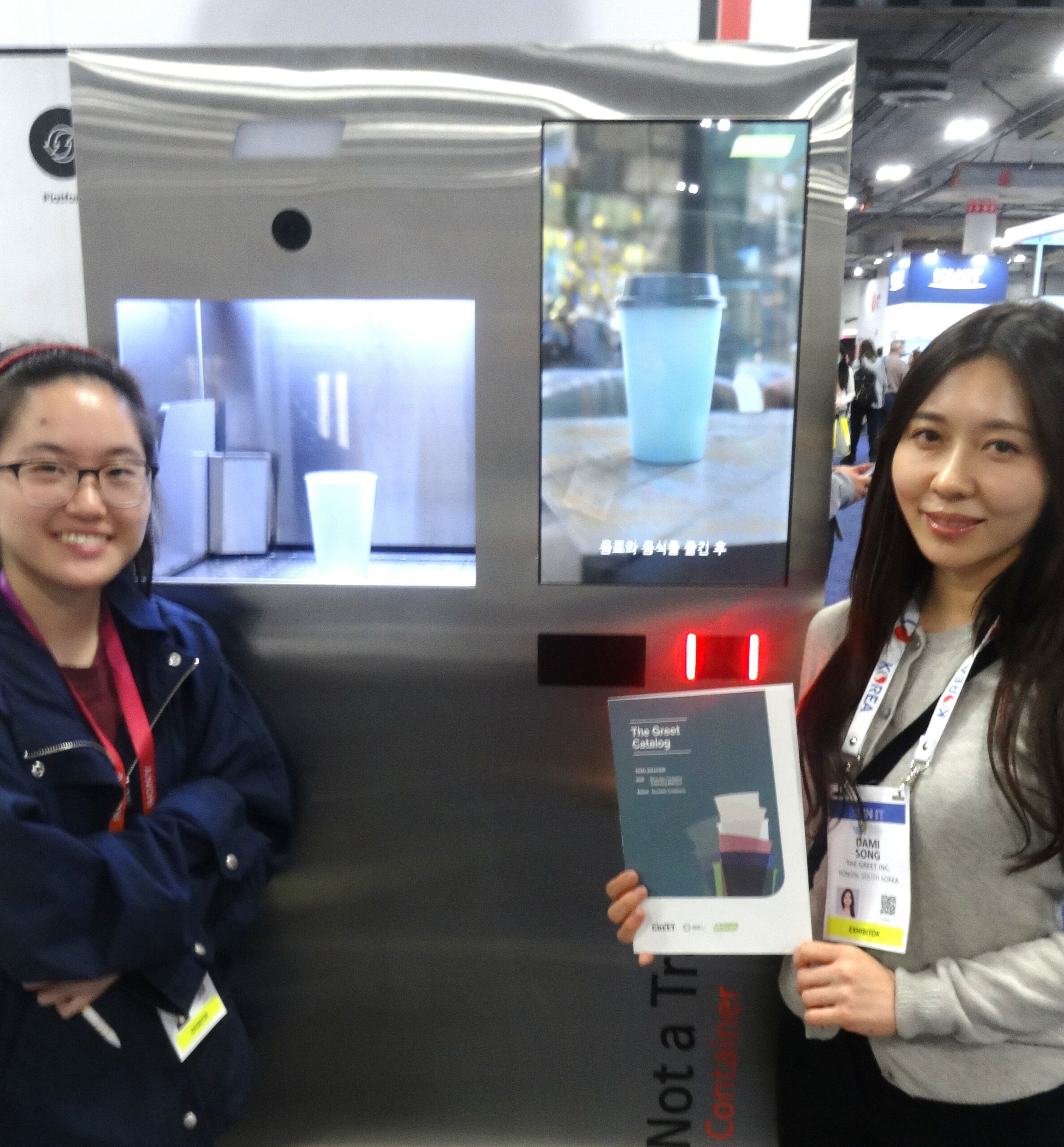
The Greet Inc., based in Seoul, South Korea, introduced its reusable container sanitation station in addition to its reusable containers.
Customers return used containers for cleaning to the sanitation station, called drimm. Users do not need to clean the containers before putting them in the machine.
The stainless steel machine uses a foam shield solution to keep the inside of the station clean as well as on the containers being cleaned.
Locations can rent the machines and manage them via remote monitoring.
The stations are retrieved when the storage rate exceeds 80%.
The machines are available for purchase, but most customers pay a monthly rental fee.
Thundercomm
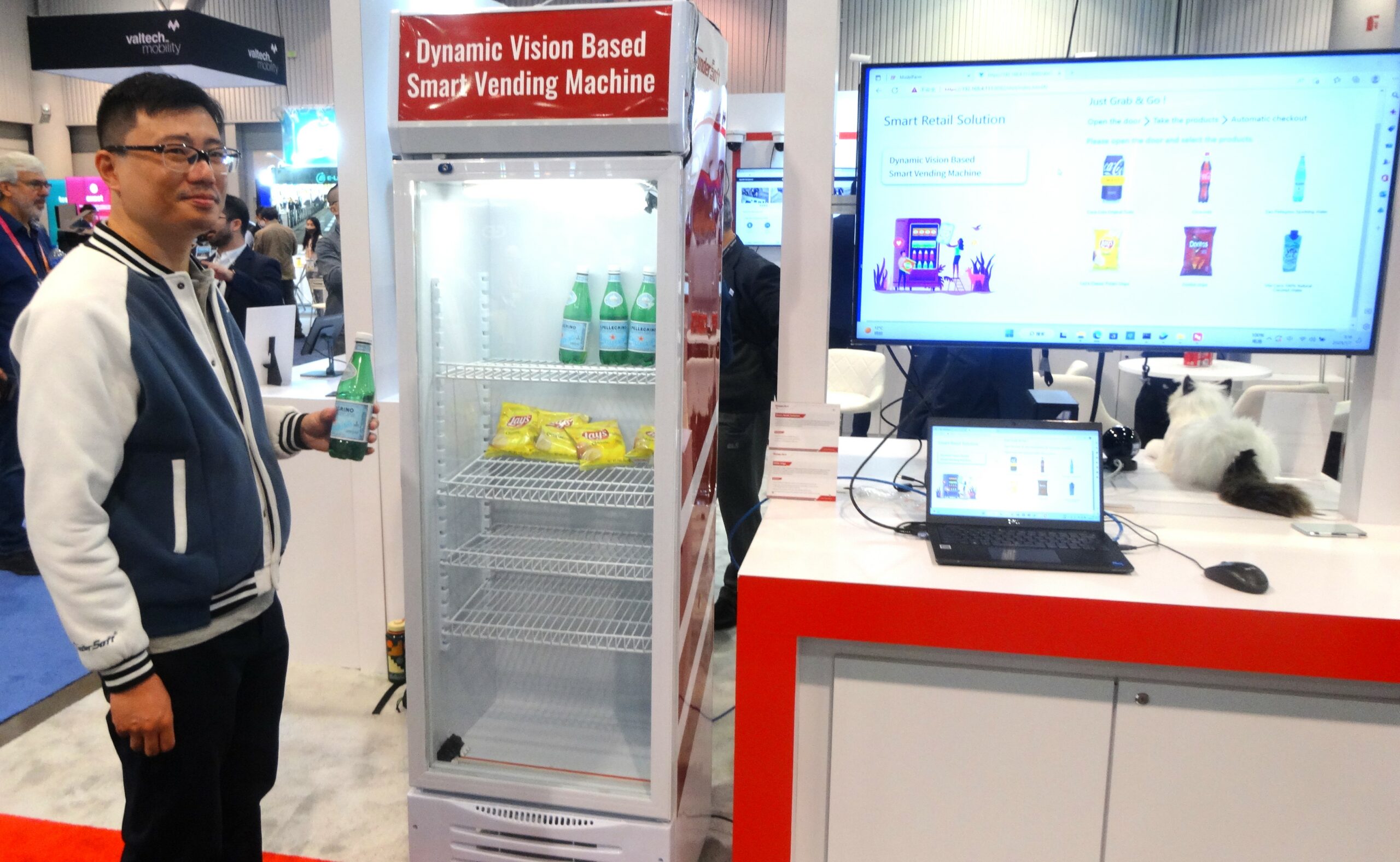
Thundercomm, a Beijing, China based IoT solutions provider, introduced a prototype for its Smart Vending Machine Solution.
The system consists of a temperature controlled cooler and touchscreen display that monitors machine inventory. The cooler has a camera that records and analyzes the purchasing process.
The system will be equipped with a payment device.
VRLCO
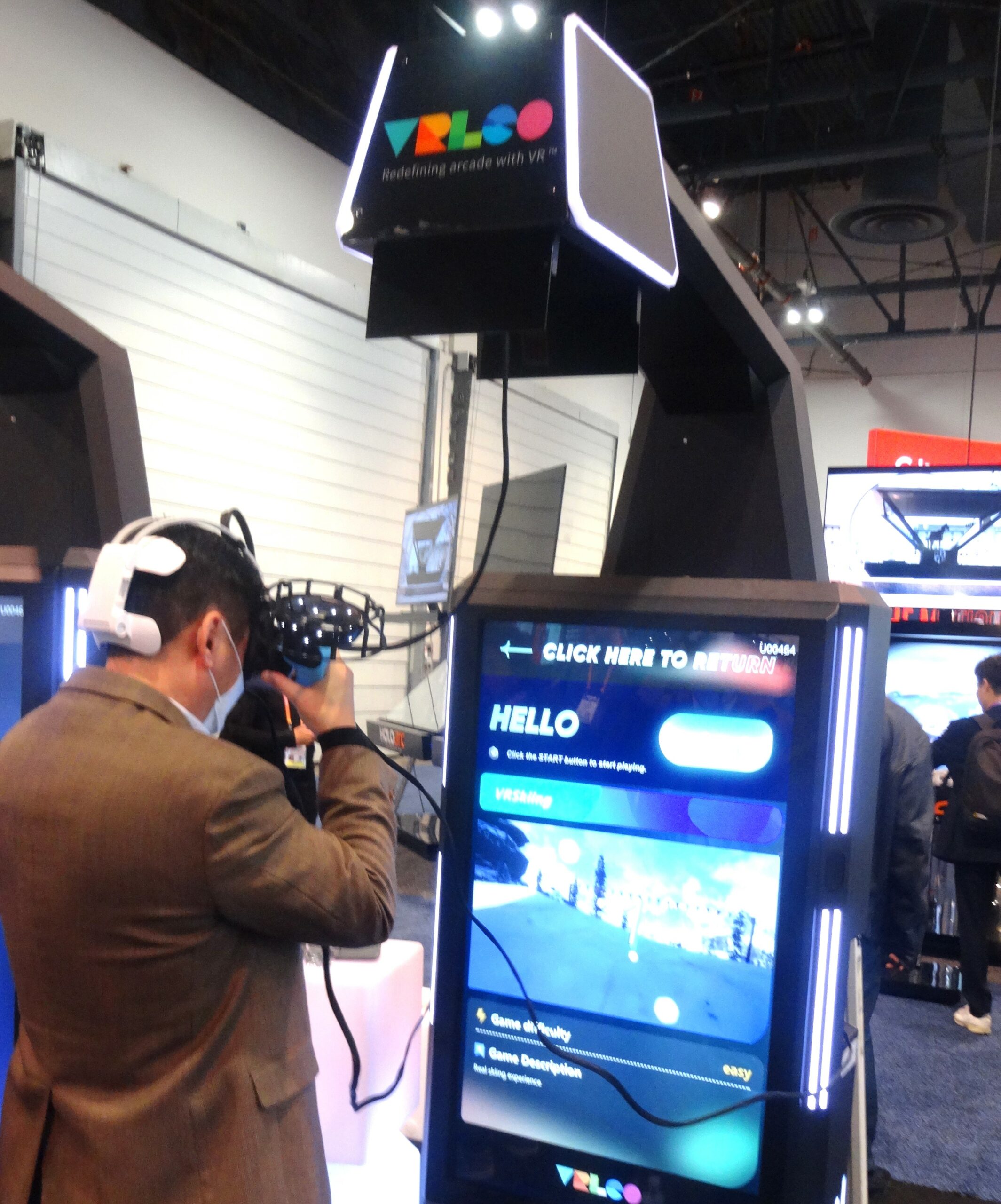
VRLCO, a Monterey Park, California-based manufacturer of virtual reality arcade games, presented a self-service VR kiosk. The users immerse themselves in VR games by wearing a mask that allows a 360-degree viewing angle.
Once completed, the UV light inside the kiosk disinfects the headset.
Yobo Inc.
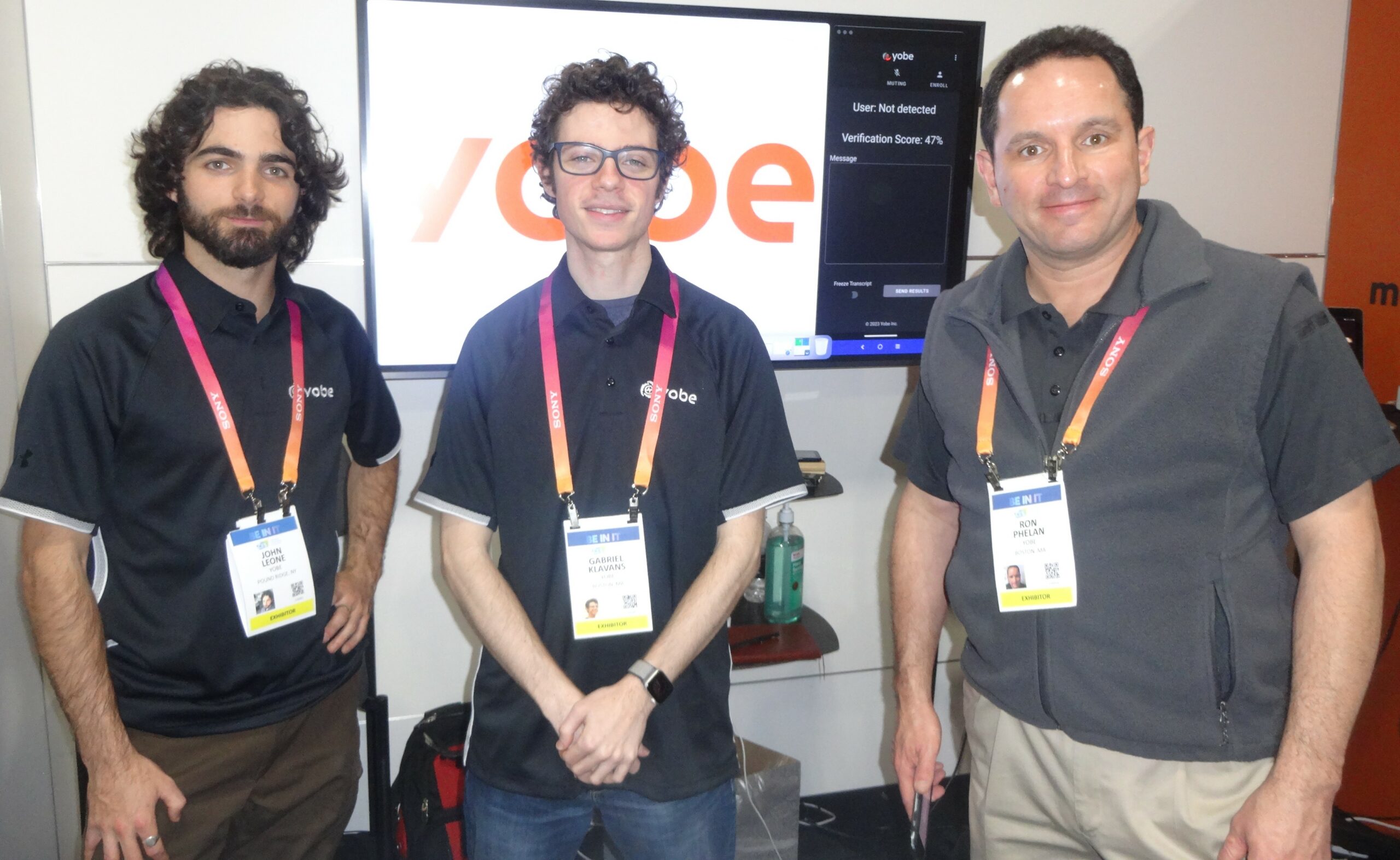
Yobe Inc., a Boston based provider of voice solutions, presented its voice technology designed to help retailers capture and use voice data. Such data can provide “biomarkers” to provide a customized experience for guests, such as recognizing them by voice and pulling up their preferences, their rewards accounts and more.
The company plans to provide guest service interactions for self-order kiosks for PLNT Burger, a New York City based plant burger restaurant chain. Guests will not need to speak in a slow or unnatural way in order to be understood.
Yo-Kai Express
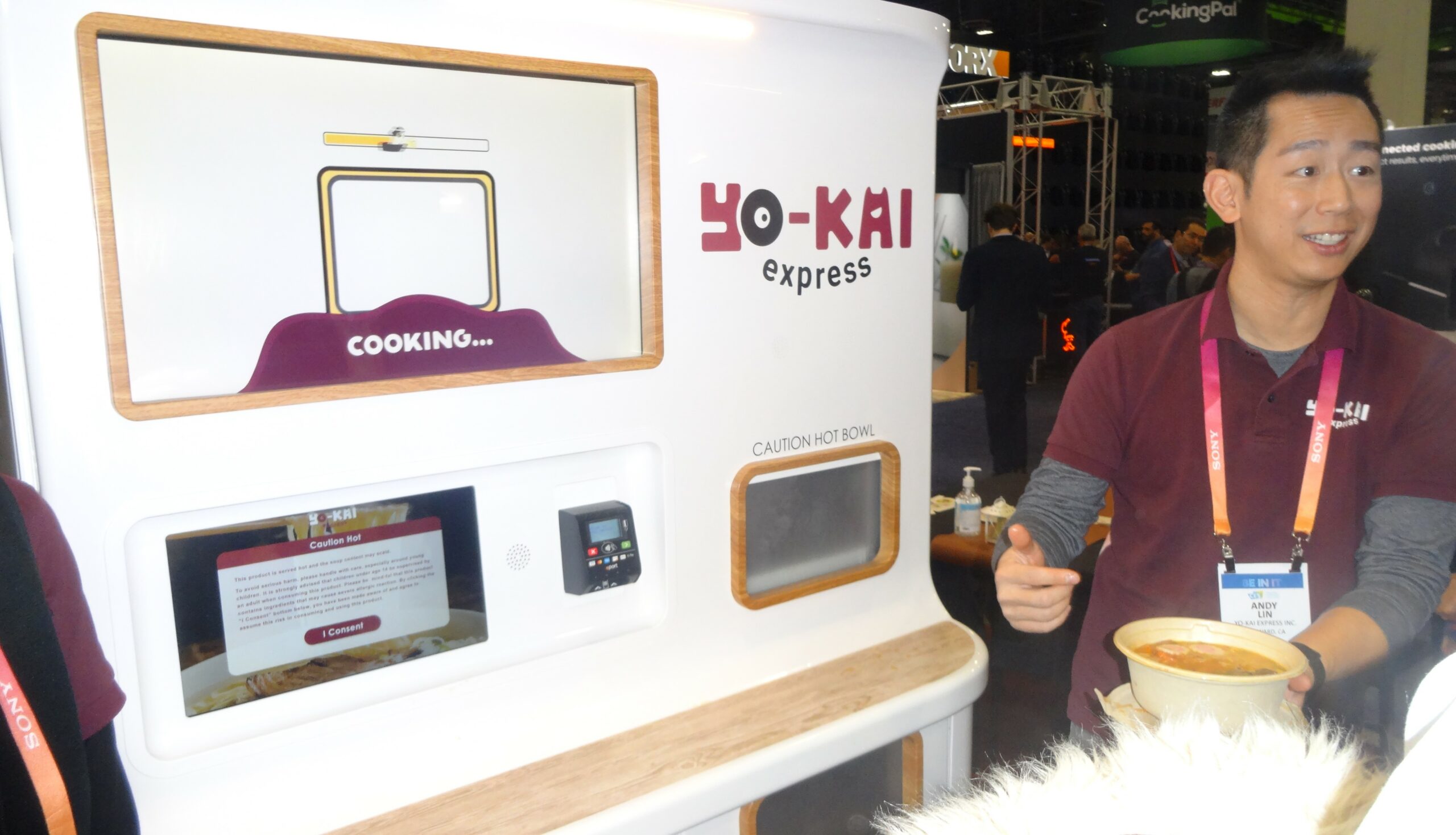
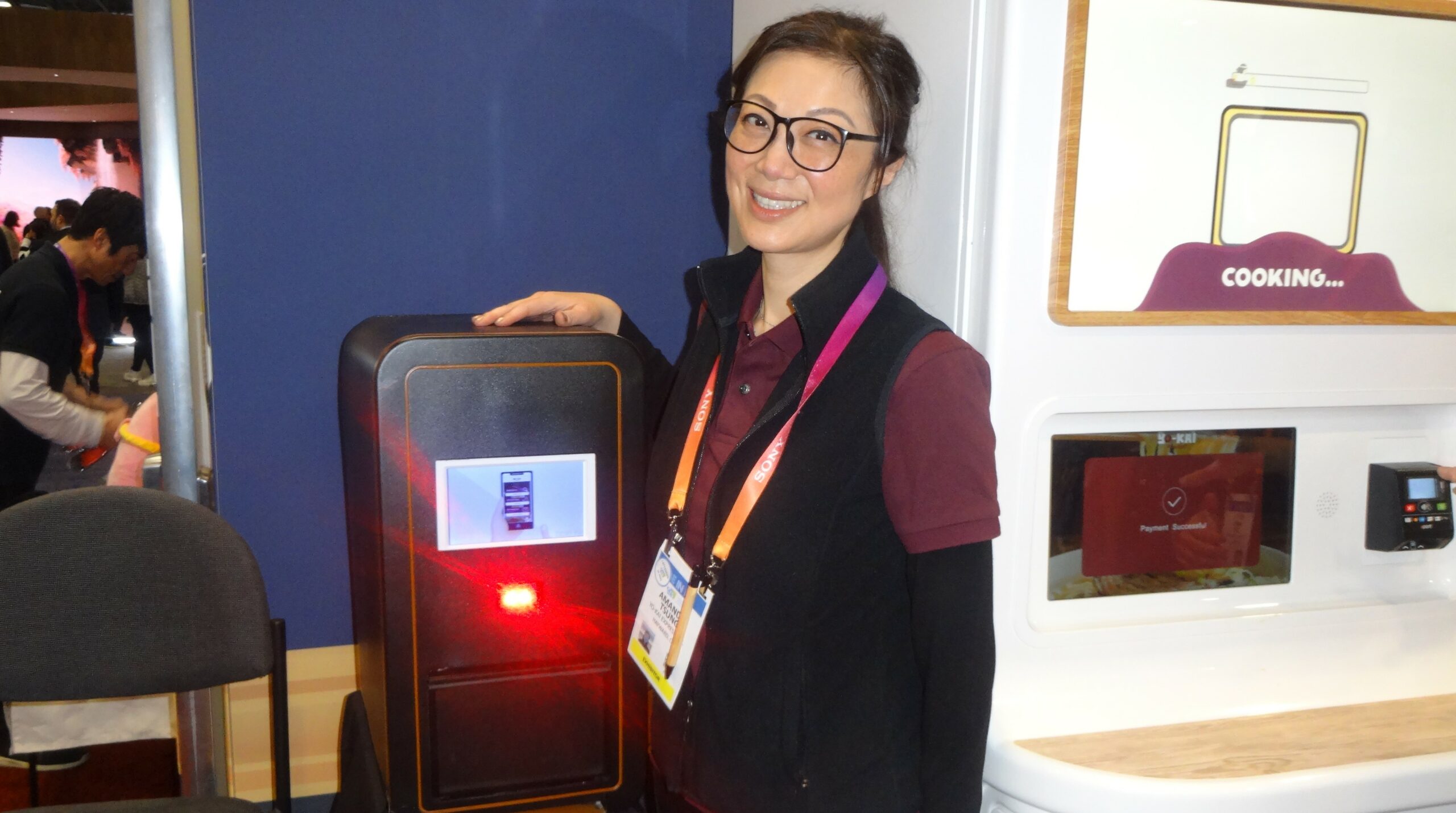
Yo-Kai Express, based in Silicon Valley, California, presented its autonomous restaurant platform serving freshly prepared meals with over 20 menu varieties, along with its YKE Desktop, a small form cooking machine that uses radio frequency identification for serving ramen.
The desktop machine, which can prepare ramen in 90 seconds and comes with an RFID freezer able to store 20 to 24 bowls, will be available in the summer.
The company will also introduce a consumer-facing app to enable customers to use phones to place orders and earn loyalty points, discounts and rewards.
Zooz Power
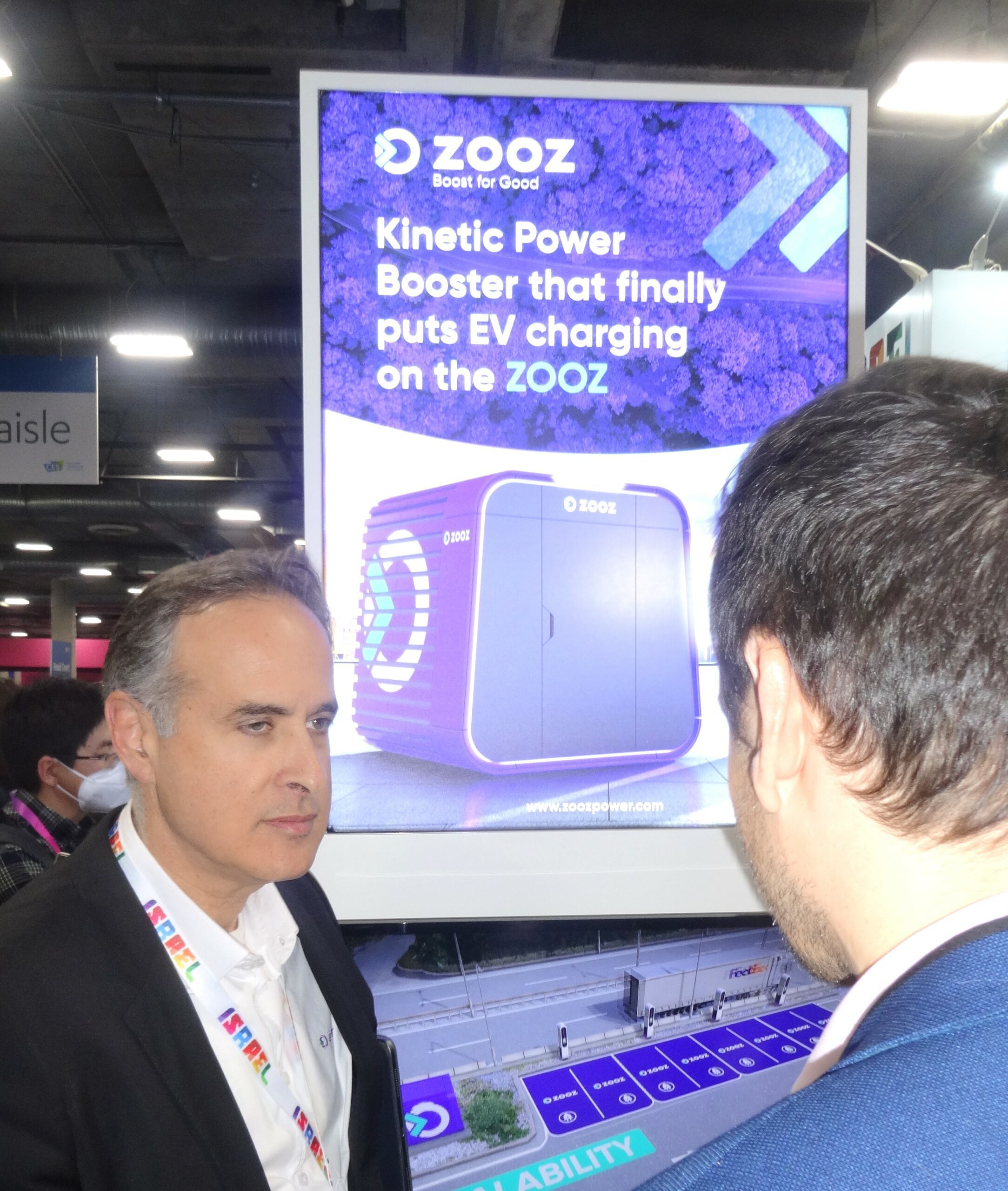
Zooz Power, an Israel-based technology company, presented its kinetic power booster, the Zoozter-100, which utilizes a technology for storing kinetic energy in flywheels to power EV DC fast chargers.
The Zoozter-100 with patented flywheel technology drives unlimited high-power charge and discharge cycles and offers a lifespan of more than 15 years, significantly outlasting battery chargers.
The unit can charge an EV battery in less than 15 minutes even in locations where with power-constrained grids, and is 100% recyclable.
The solution provides lower total cost of ownership compared to chemical battery solutions, according to the company.


